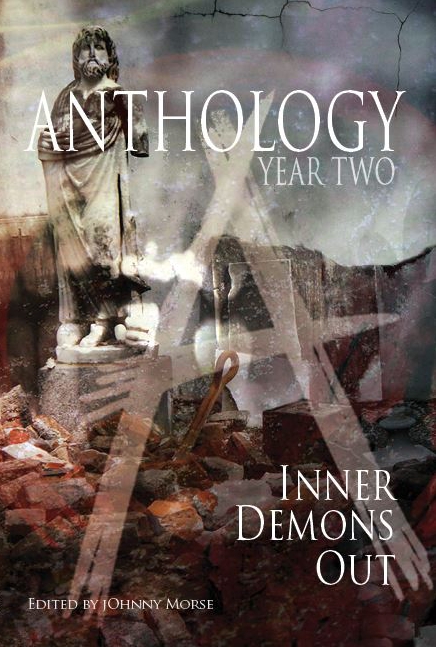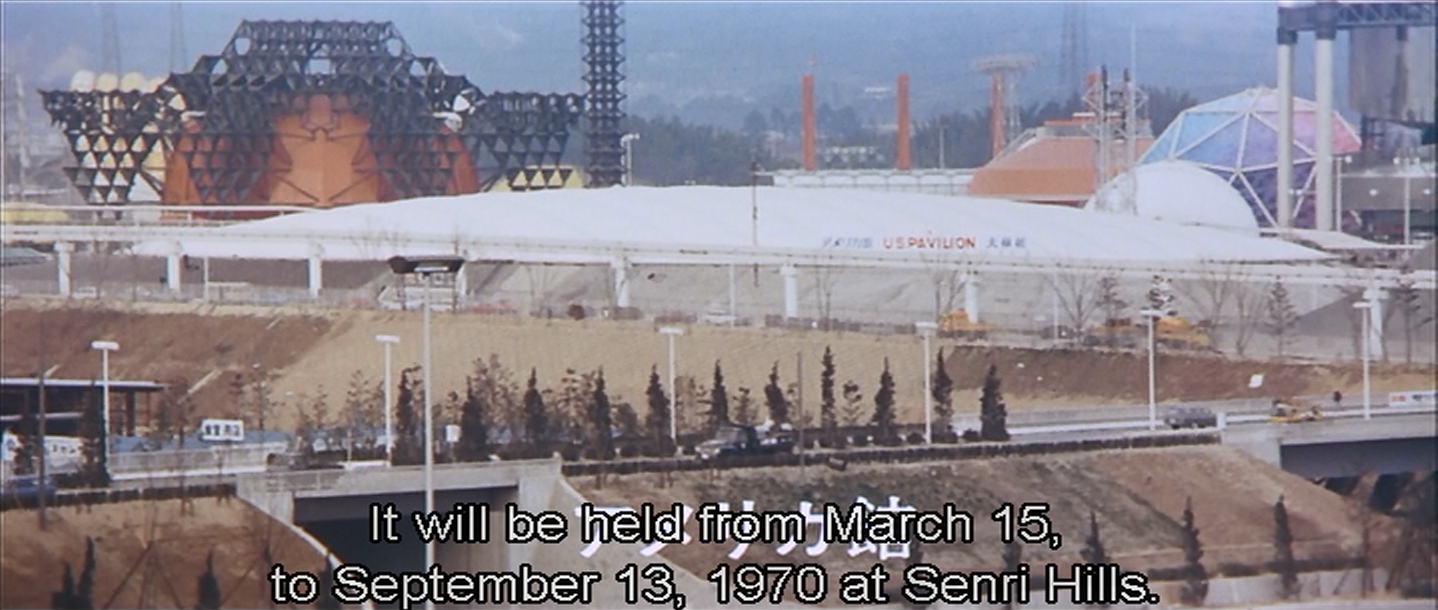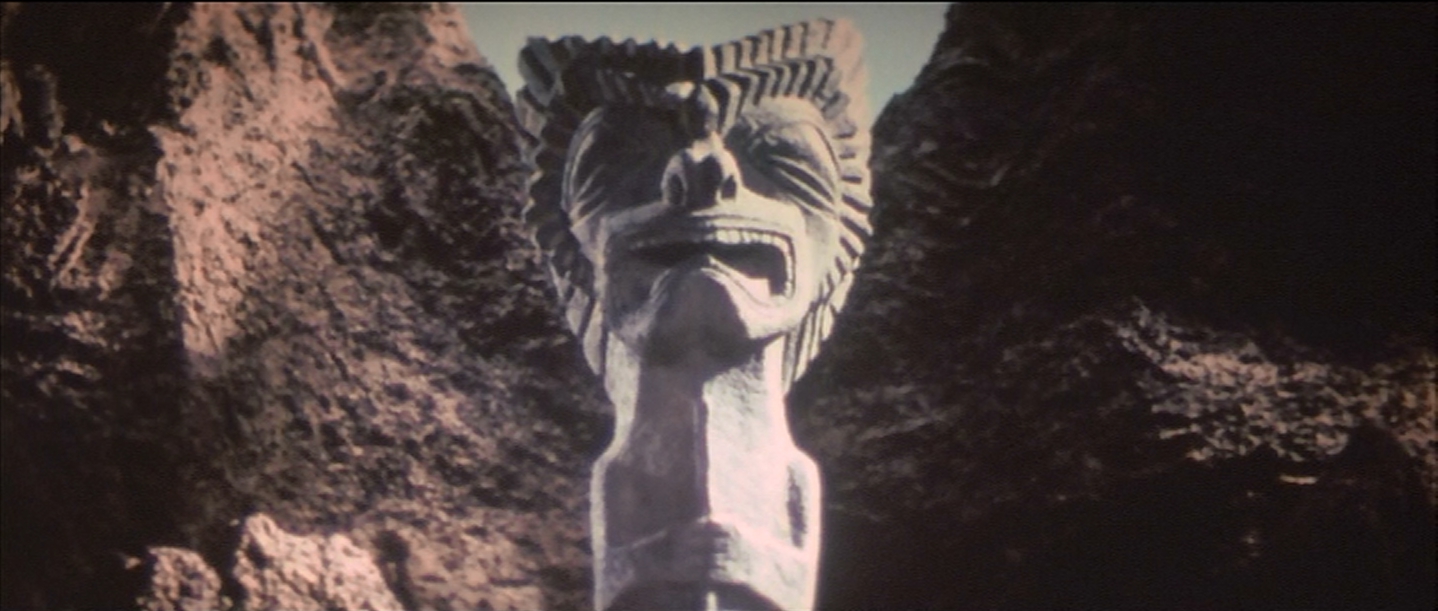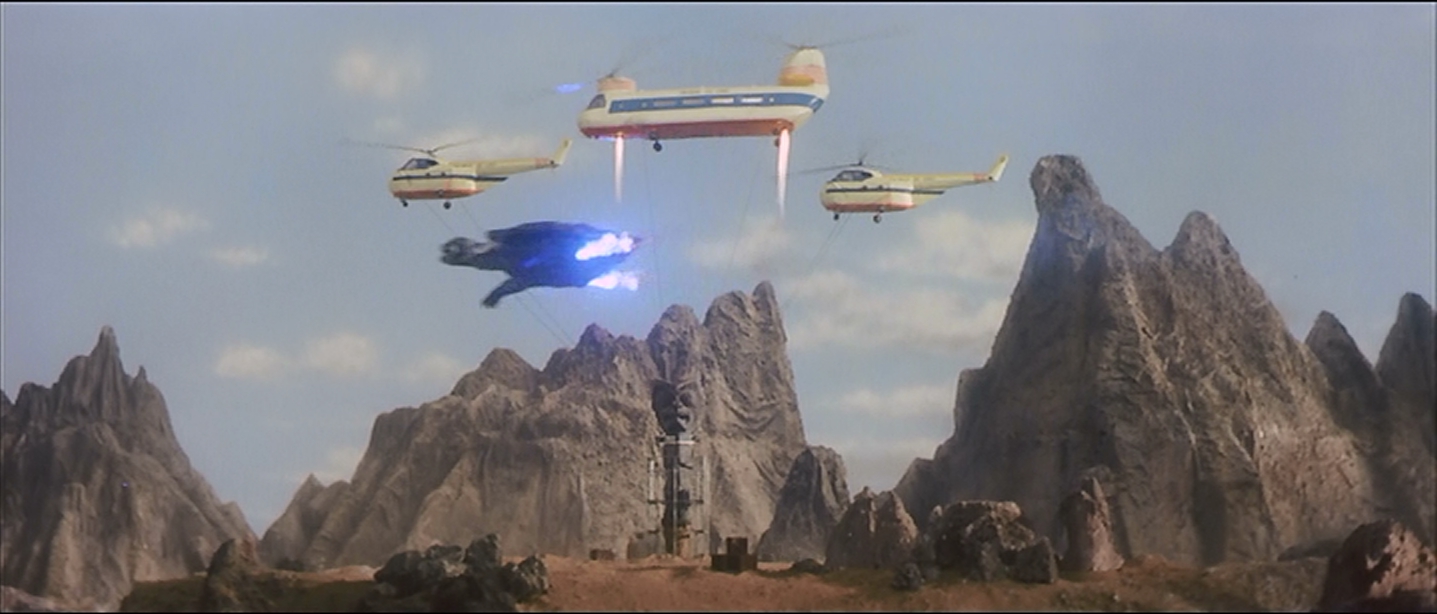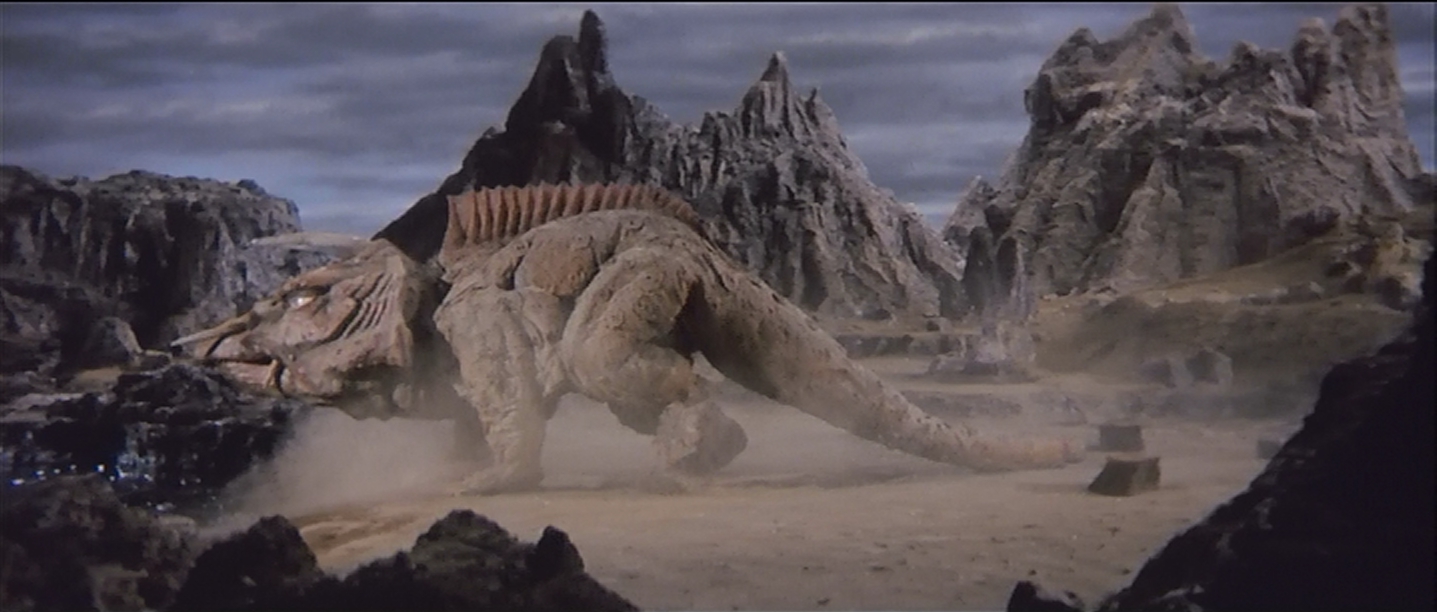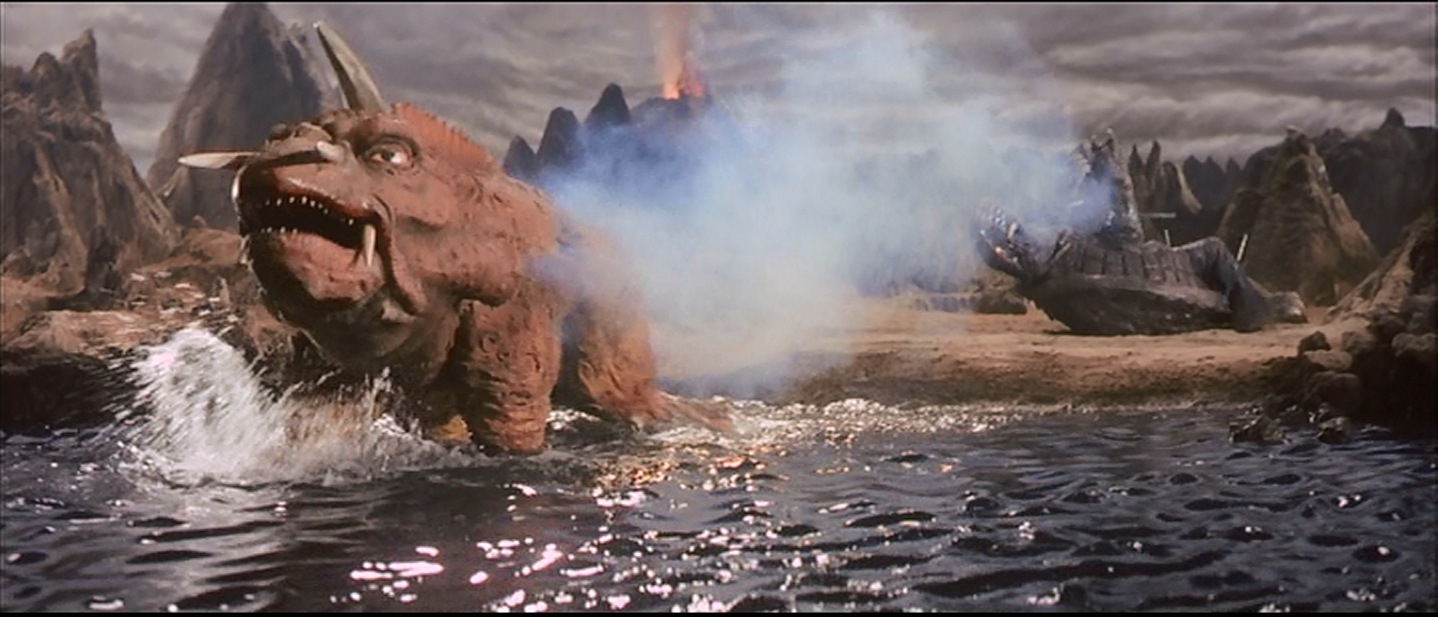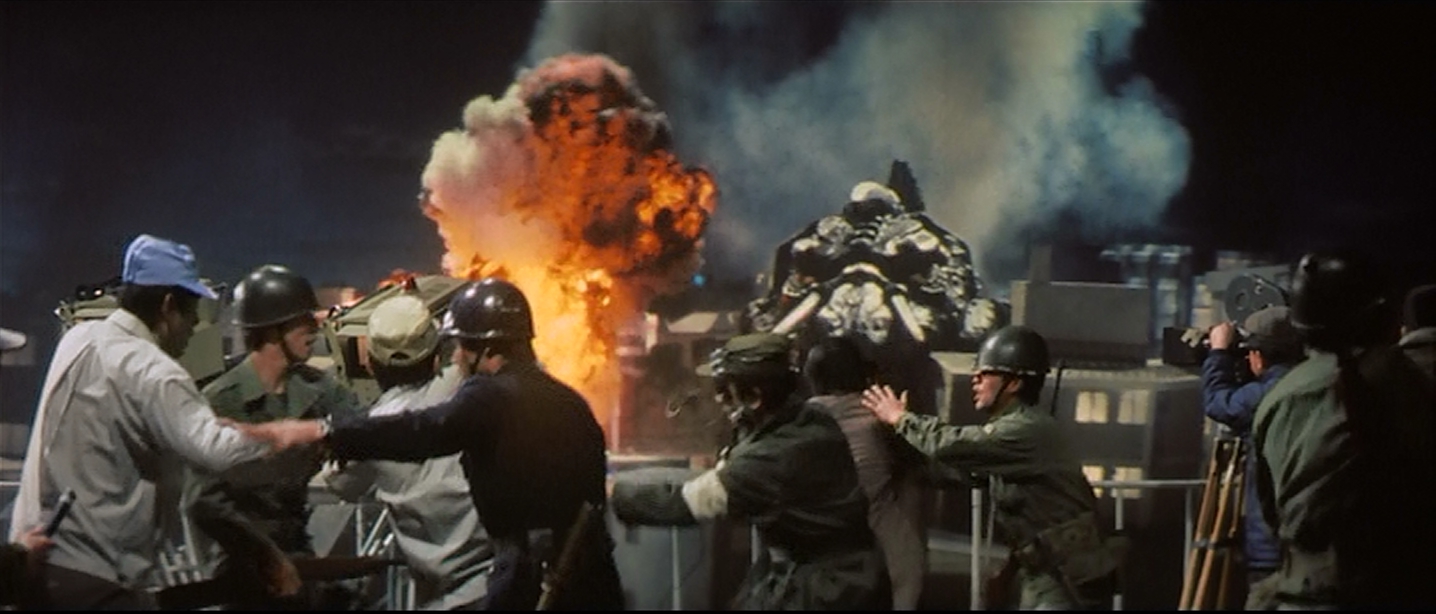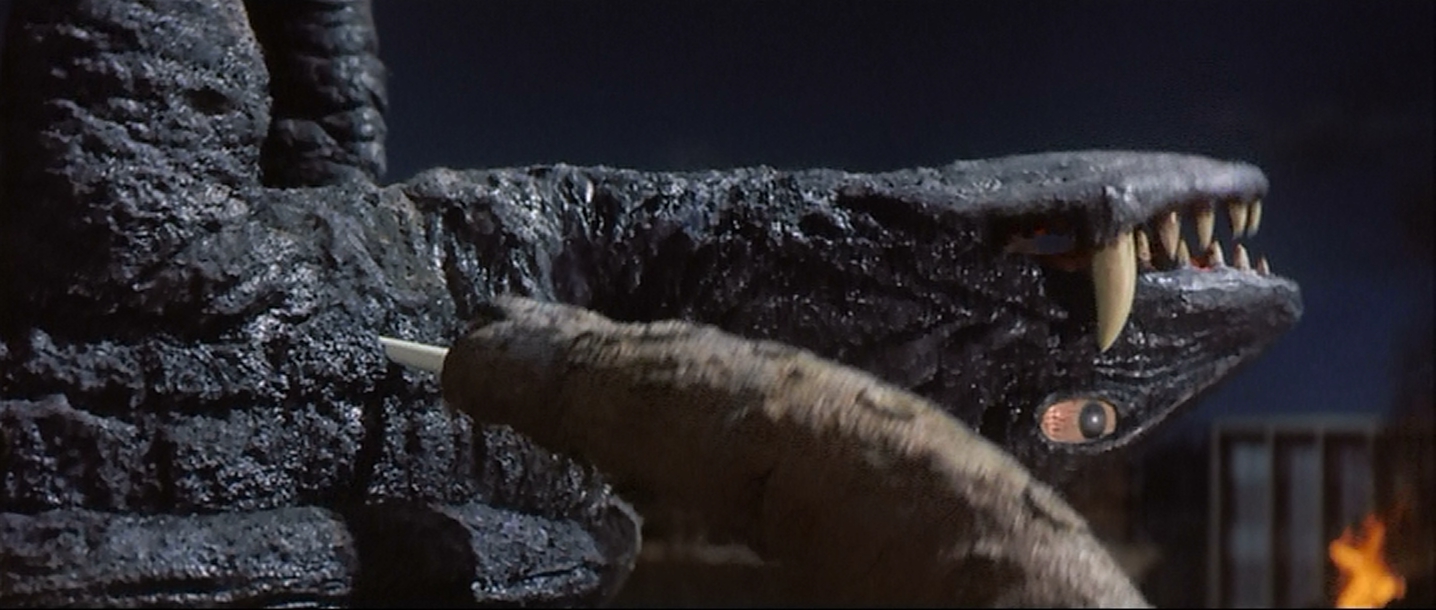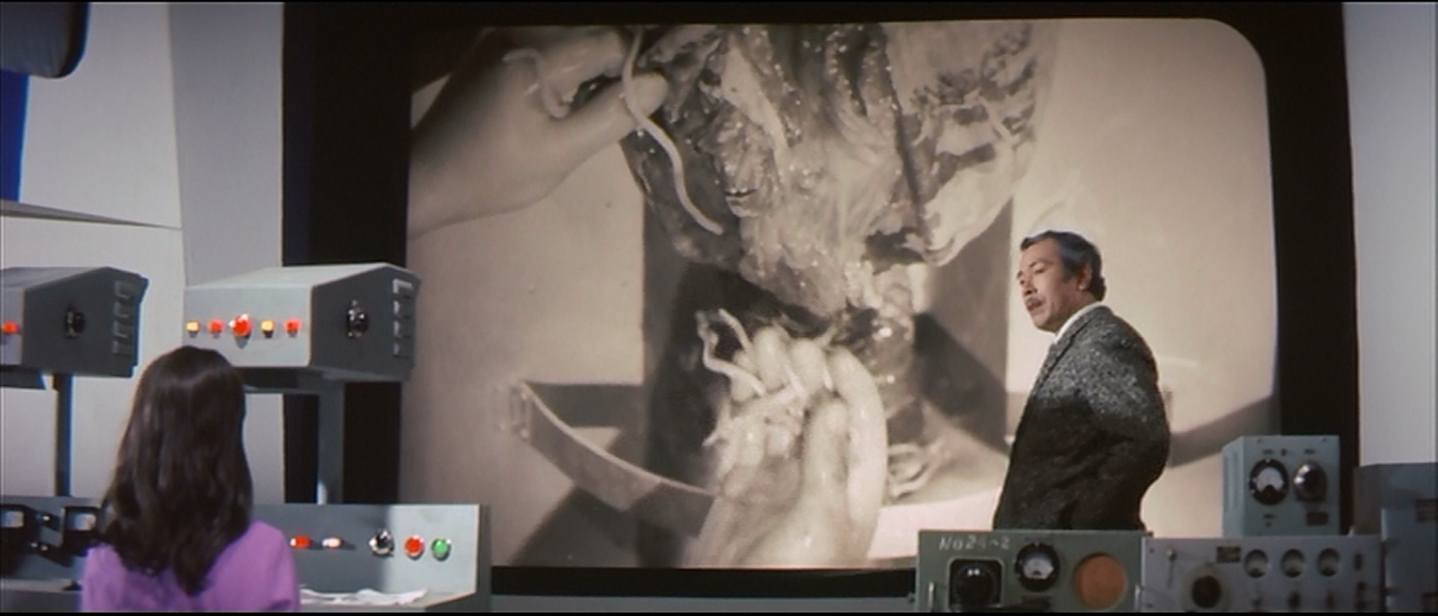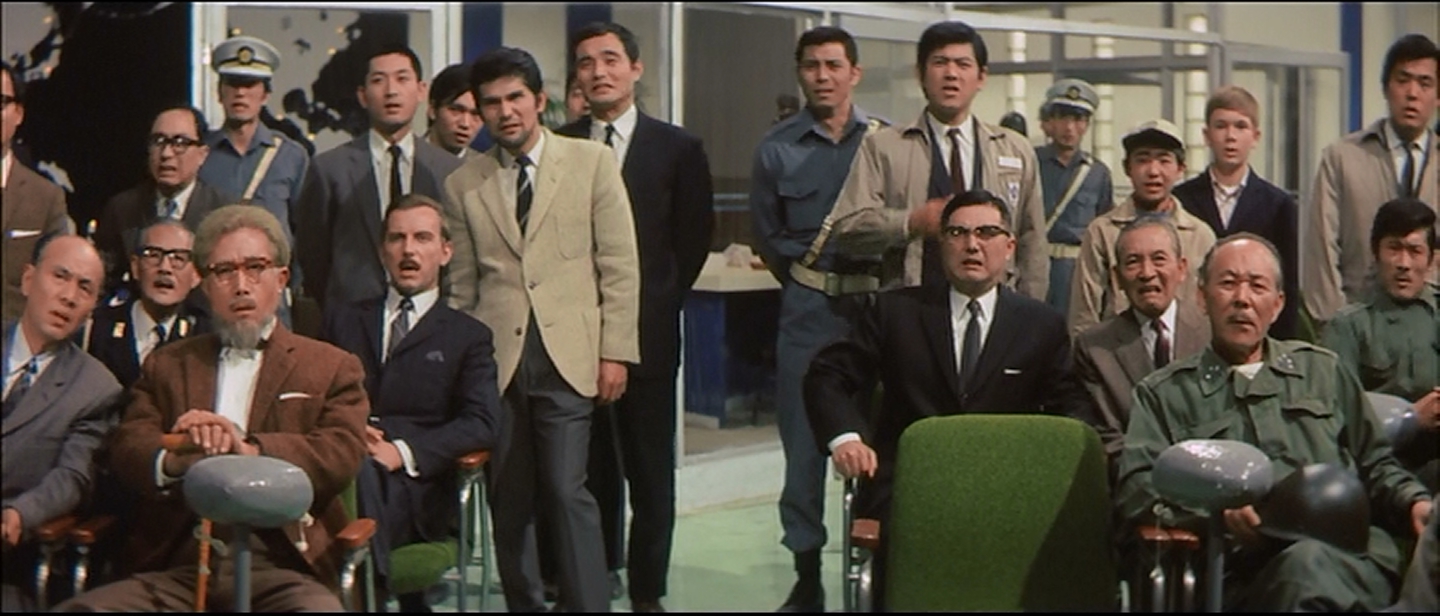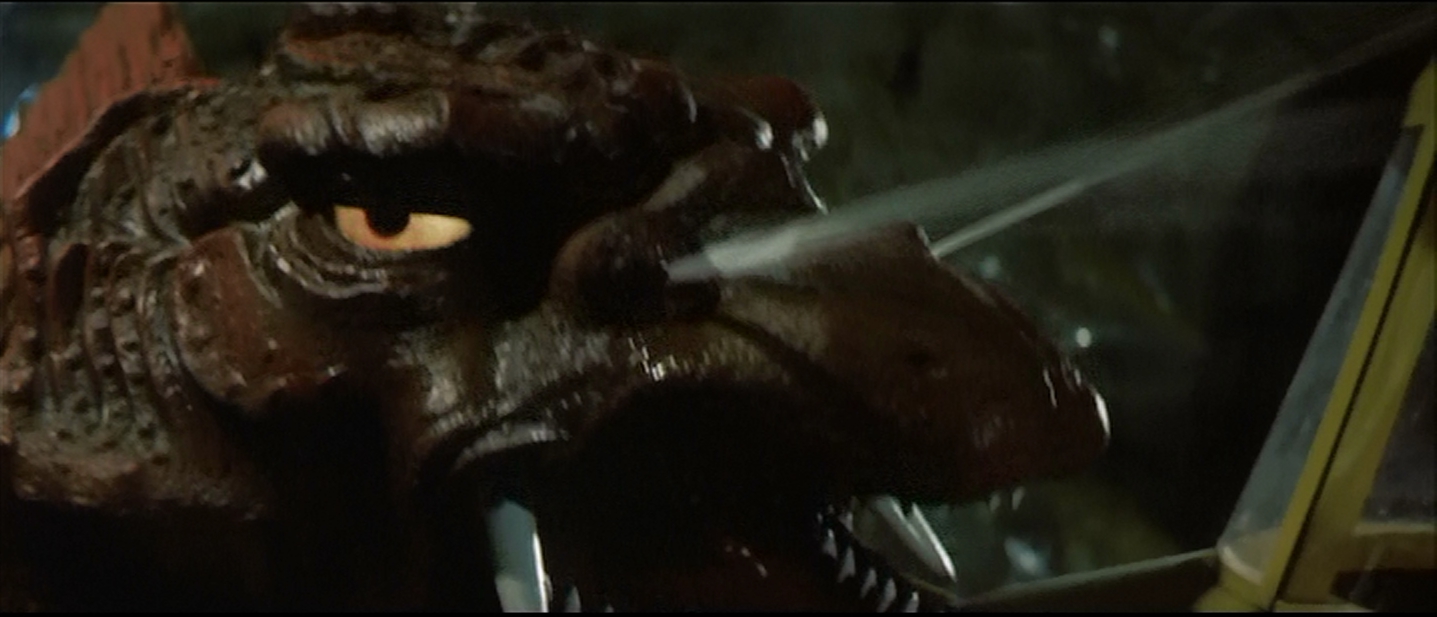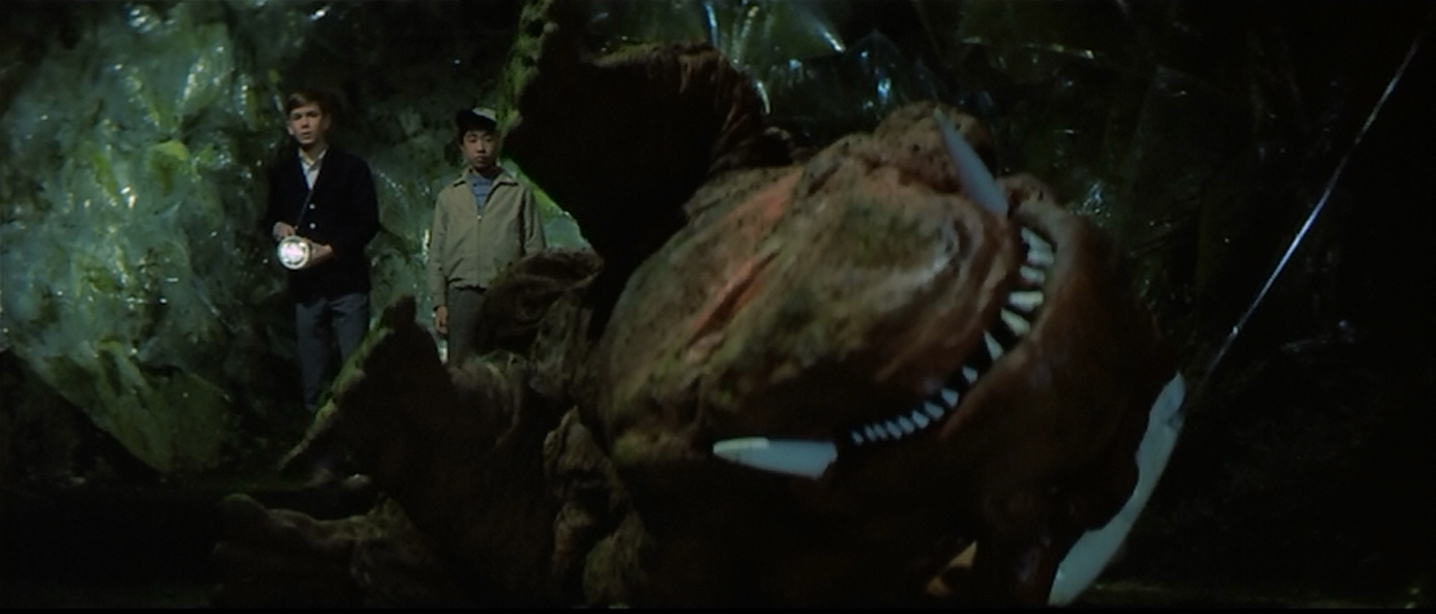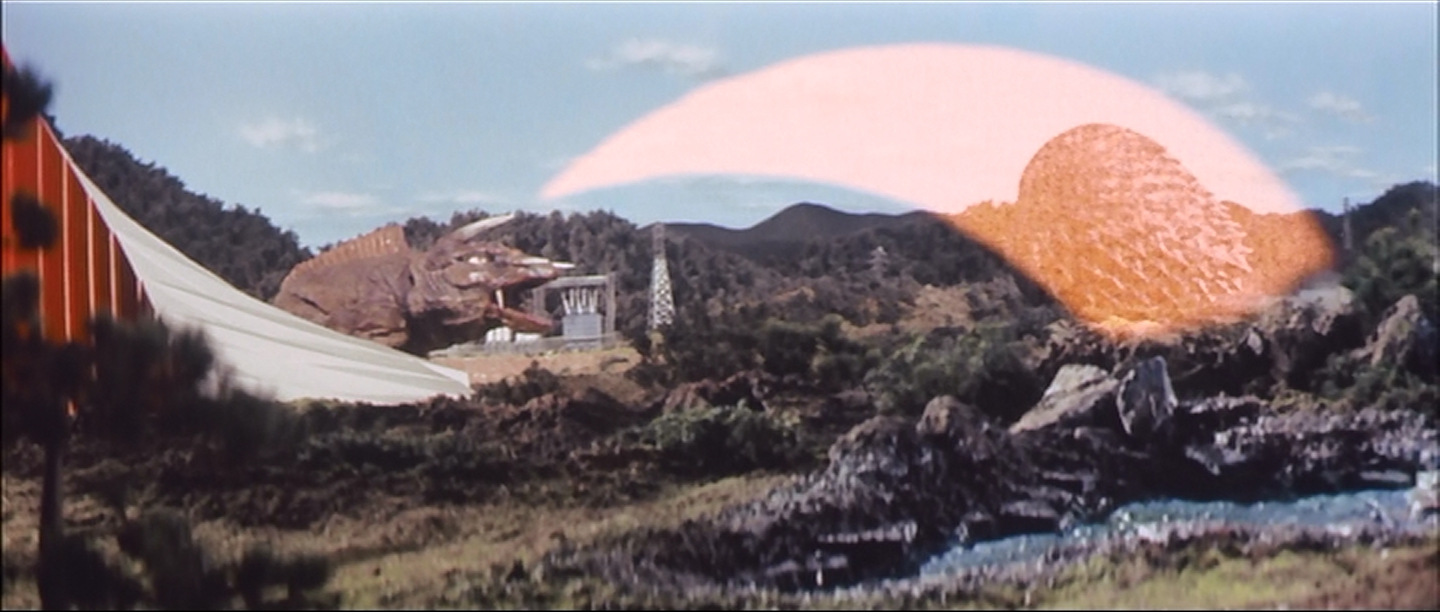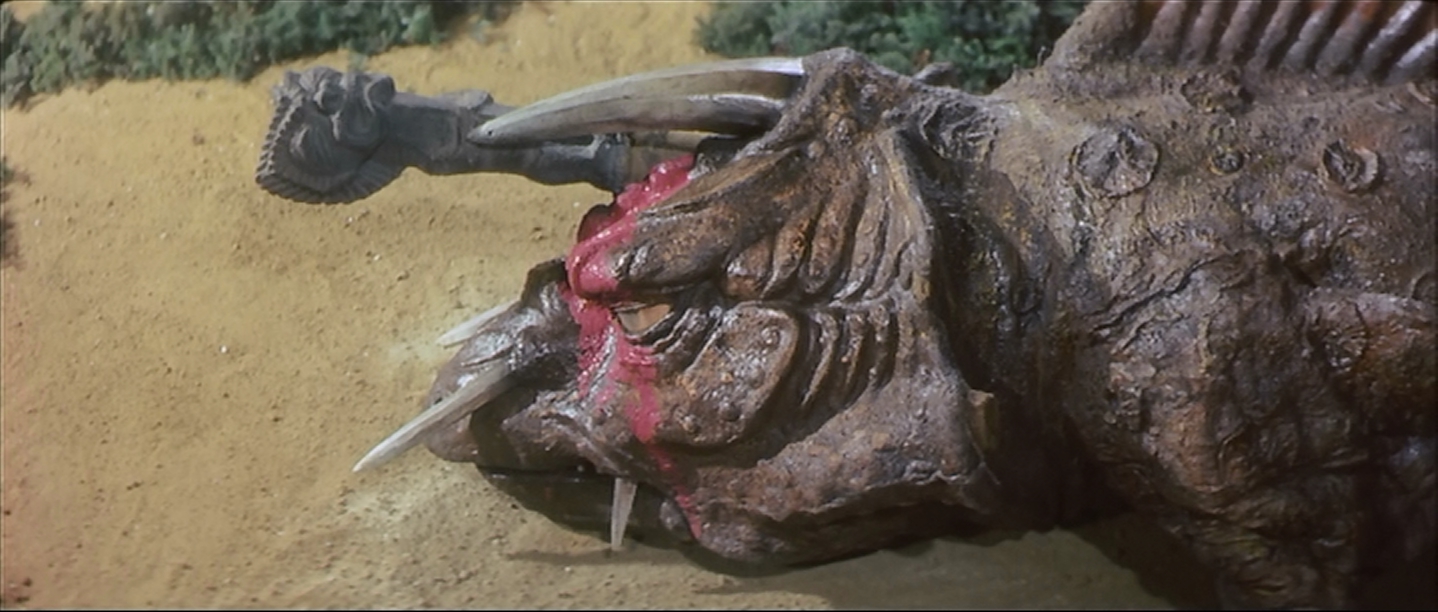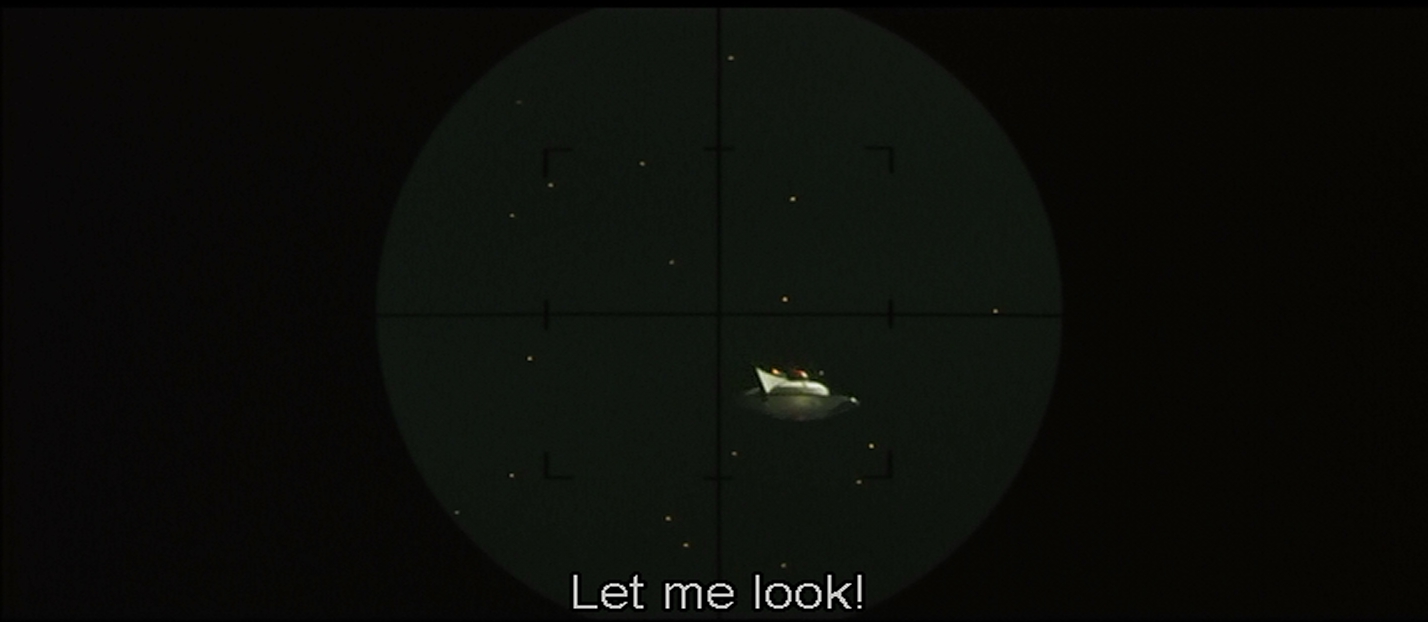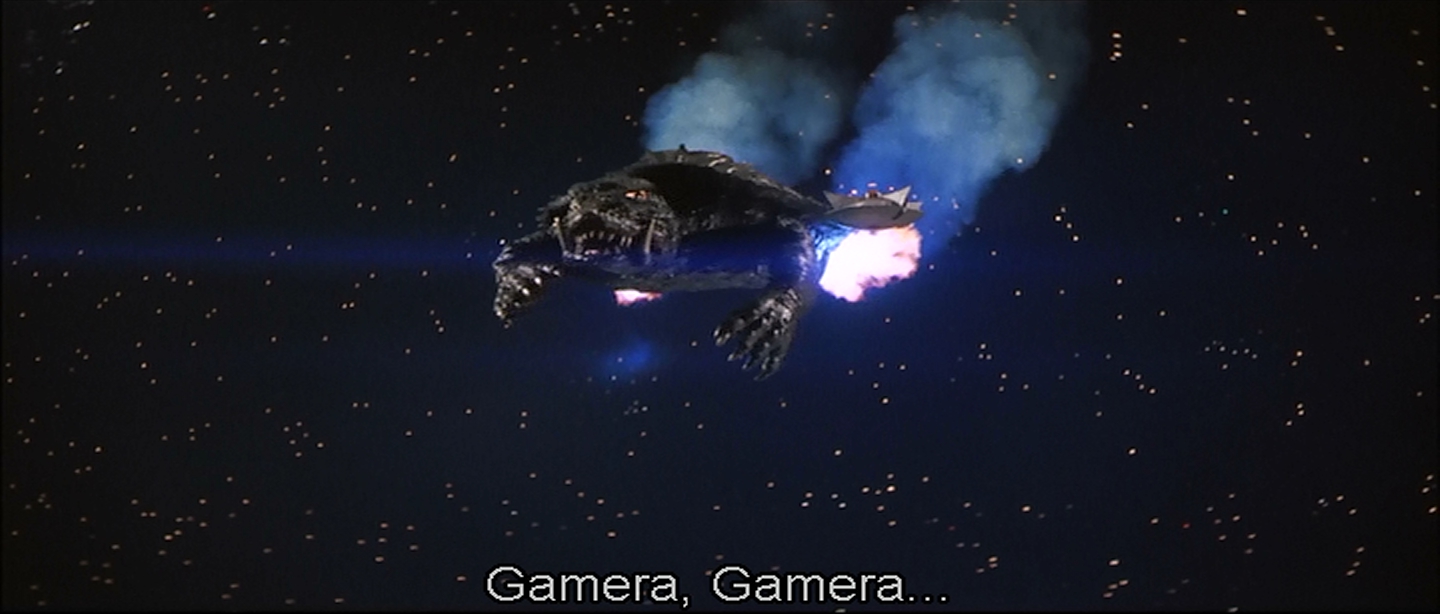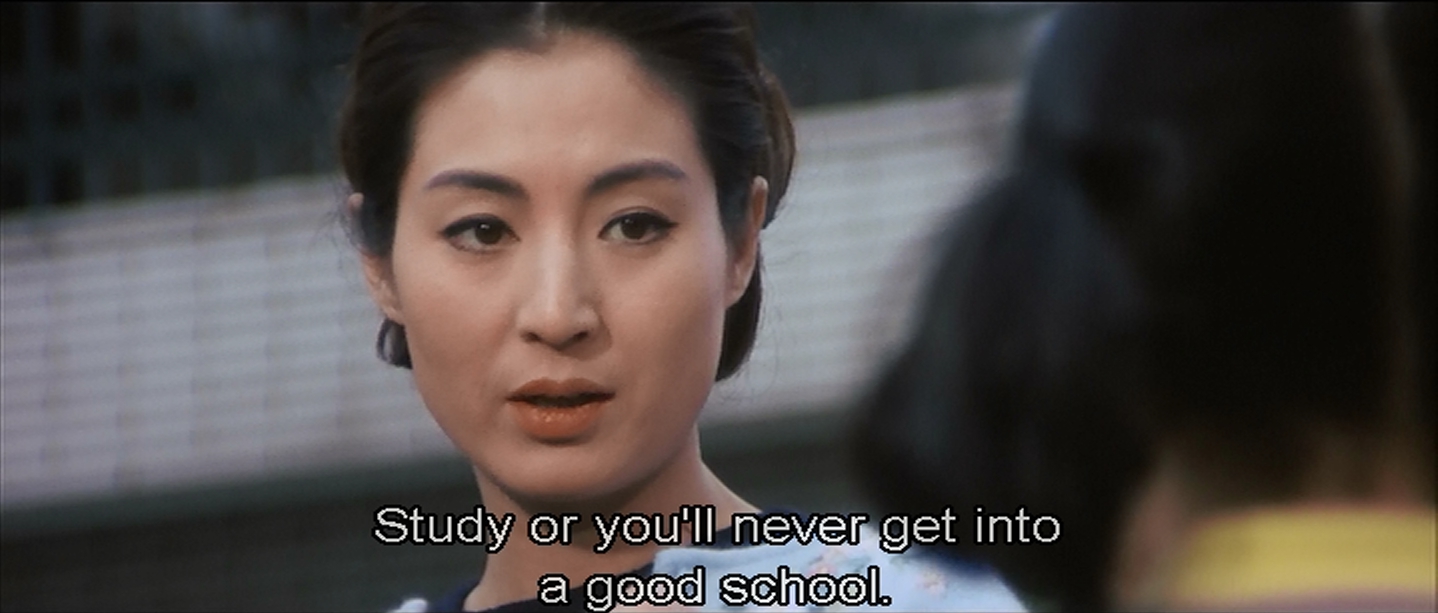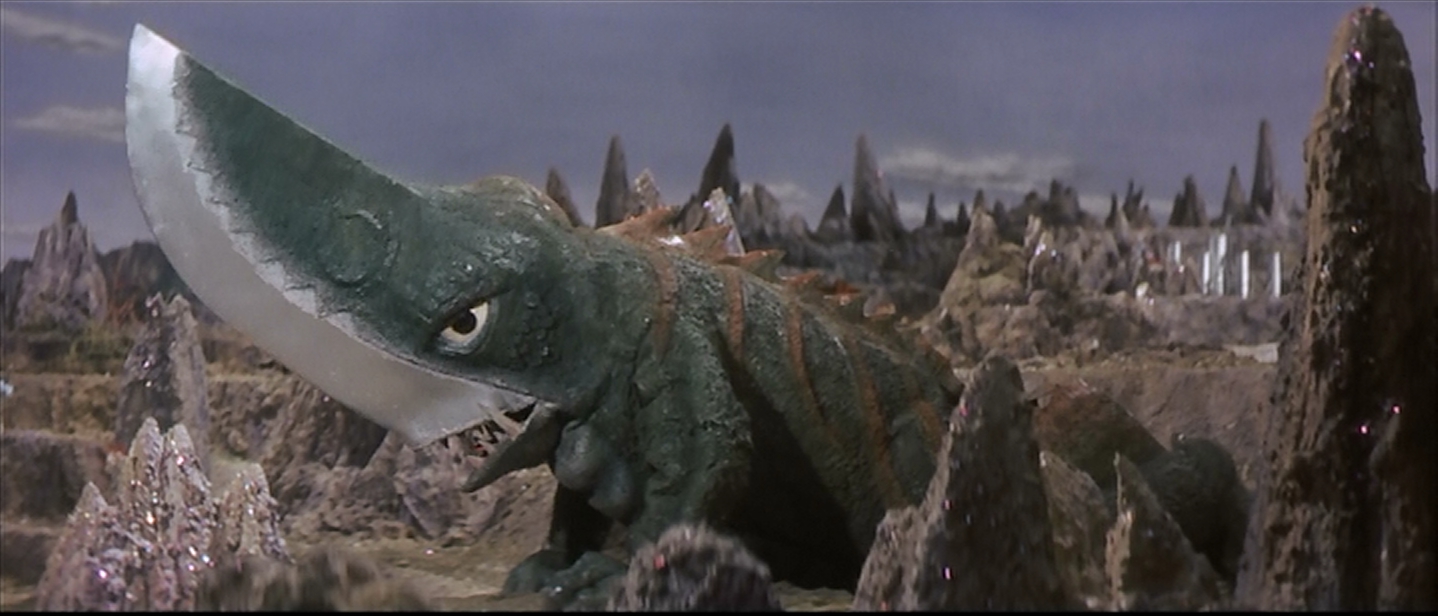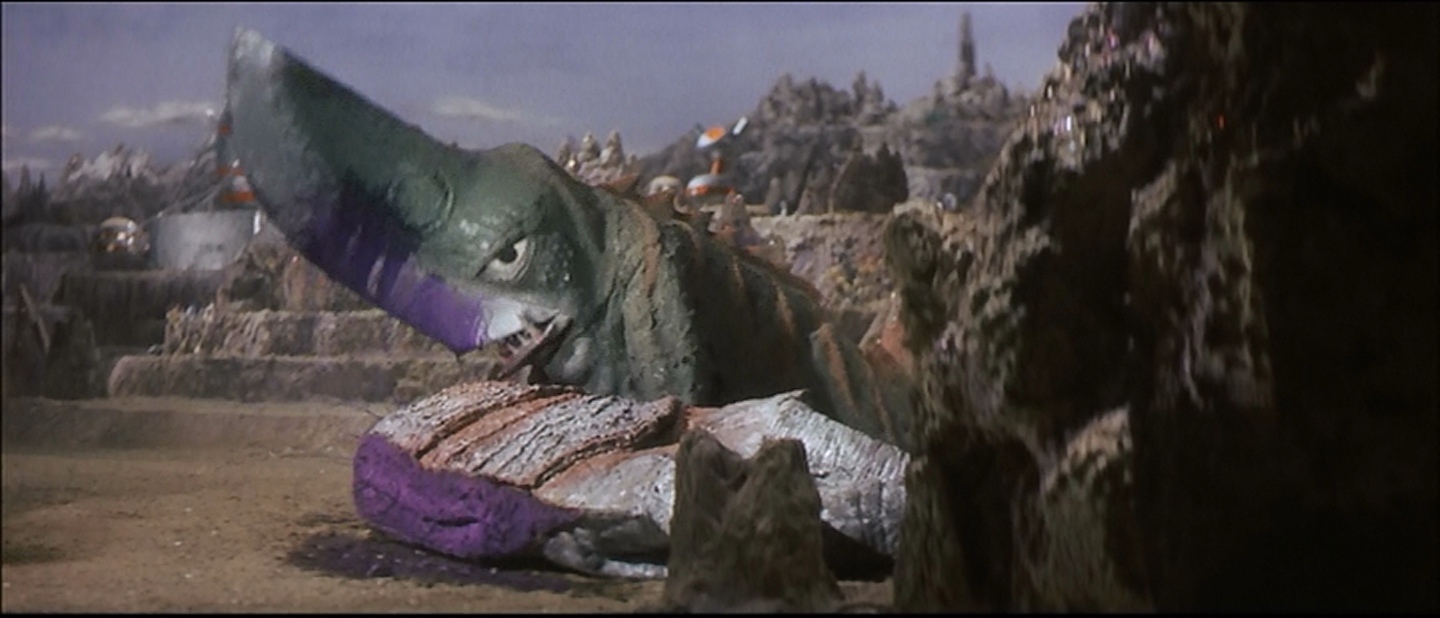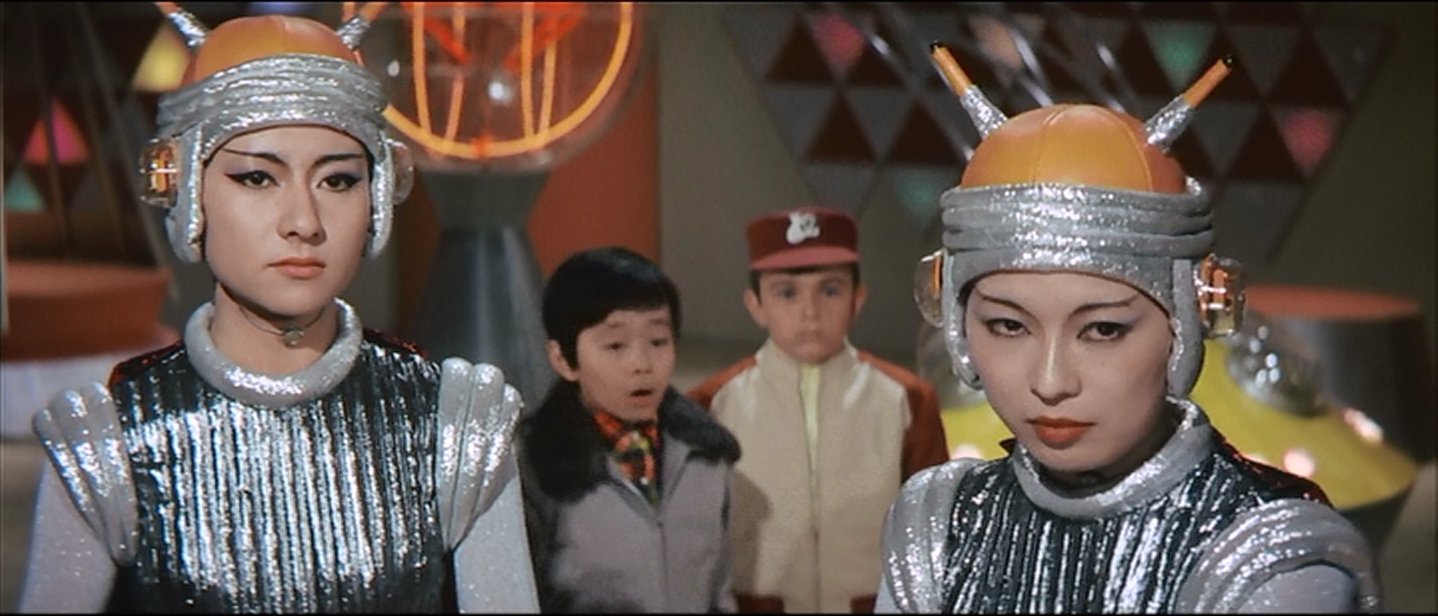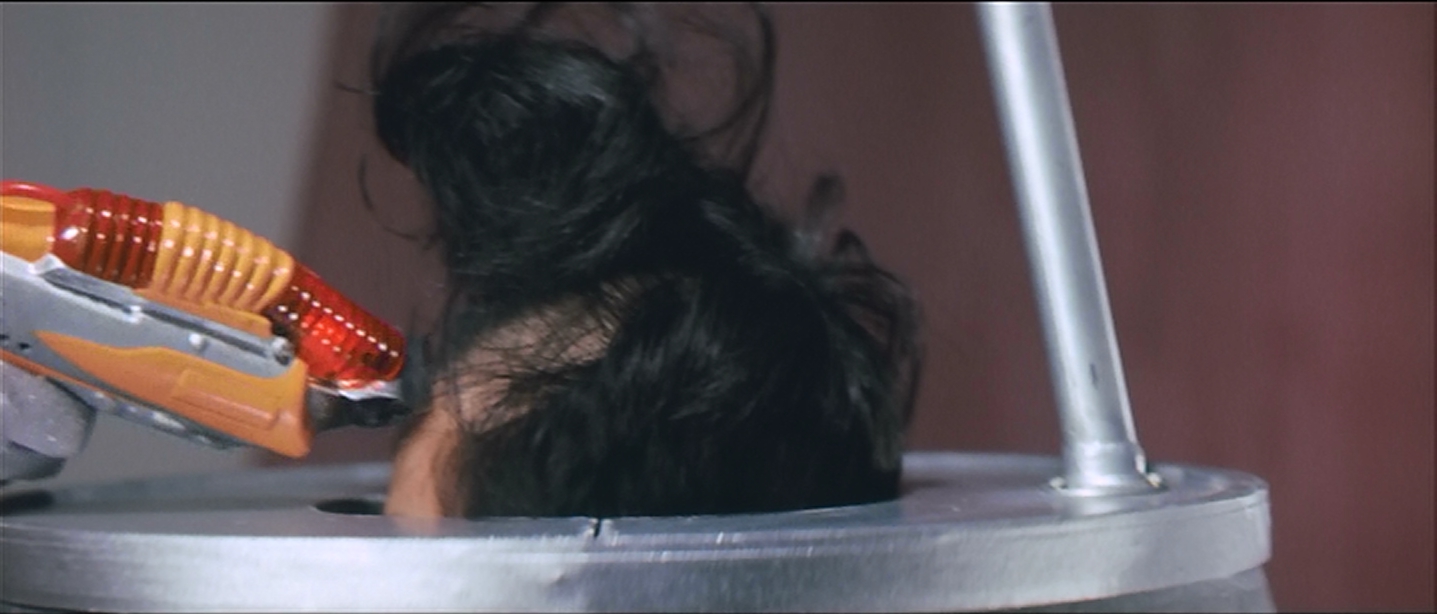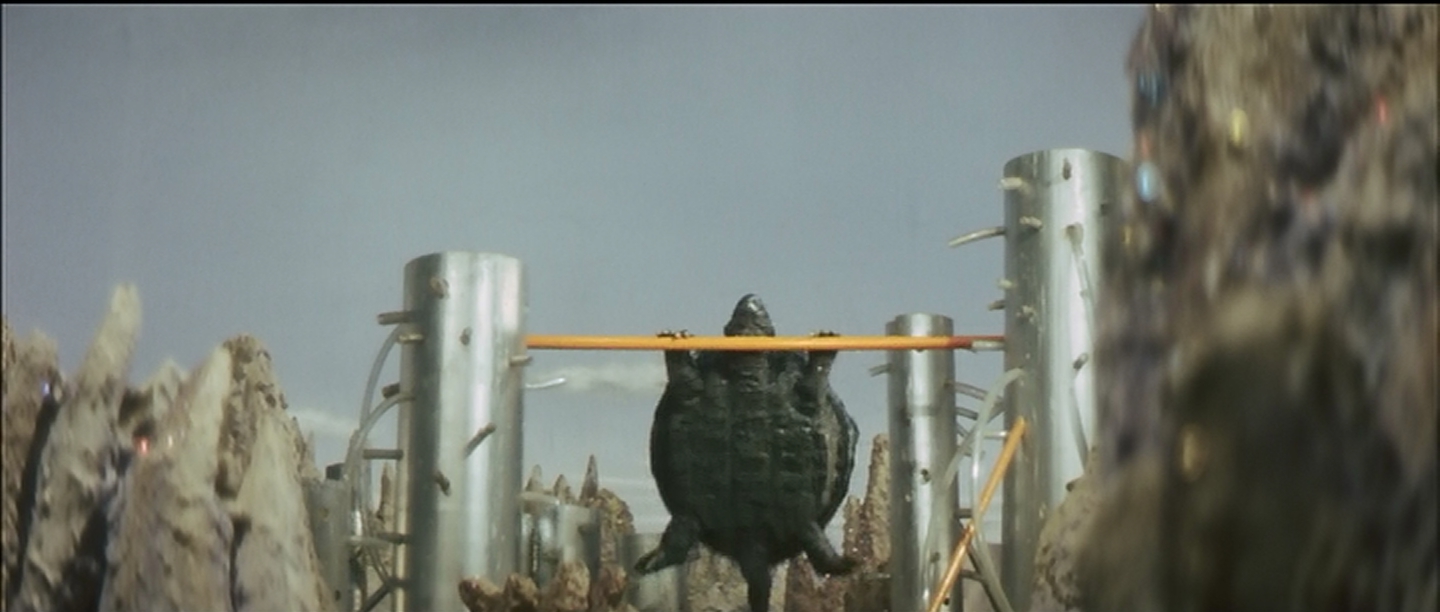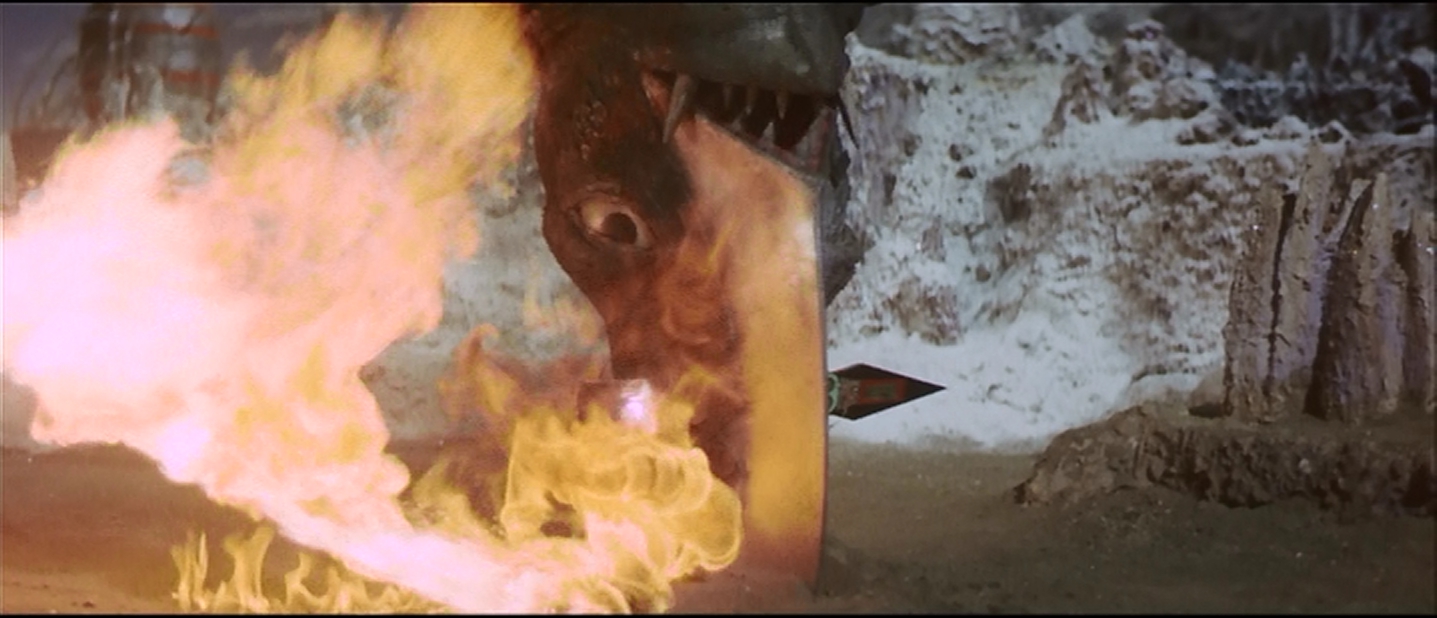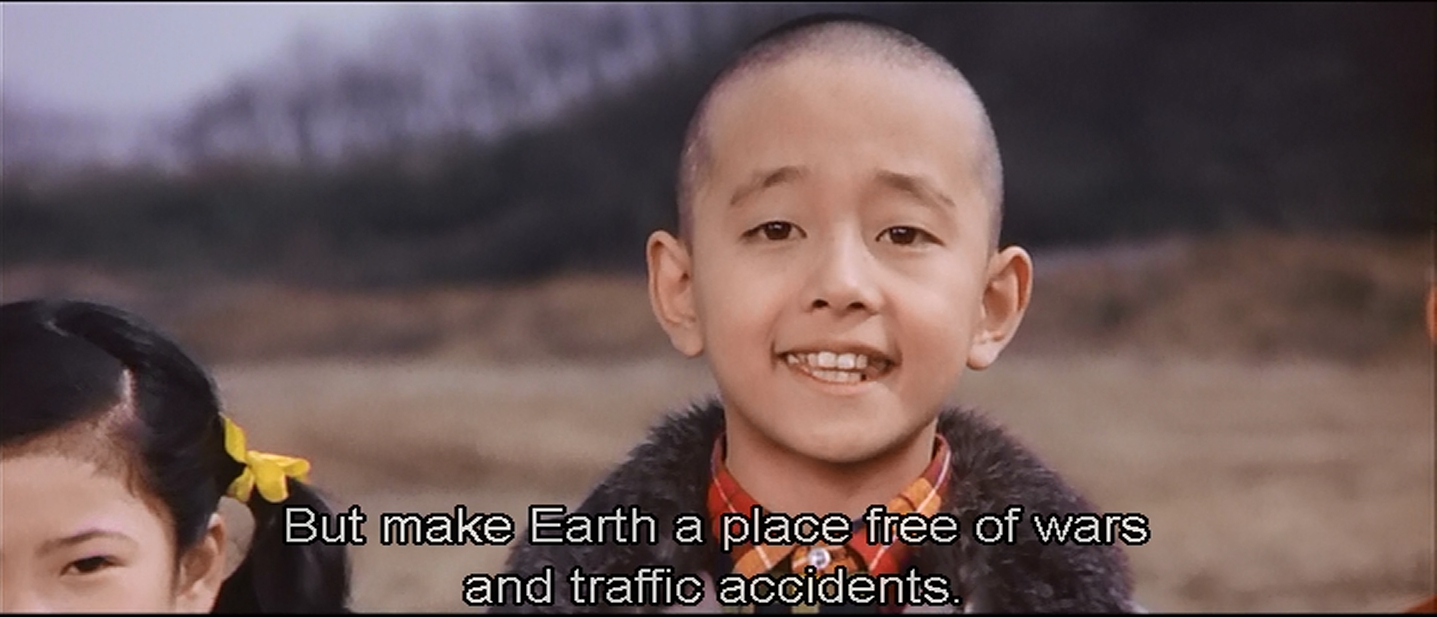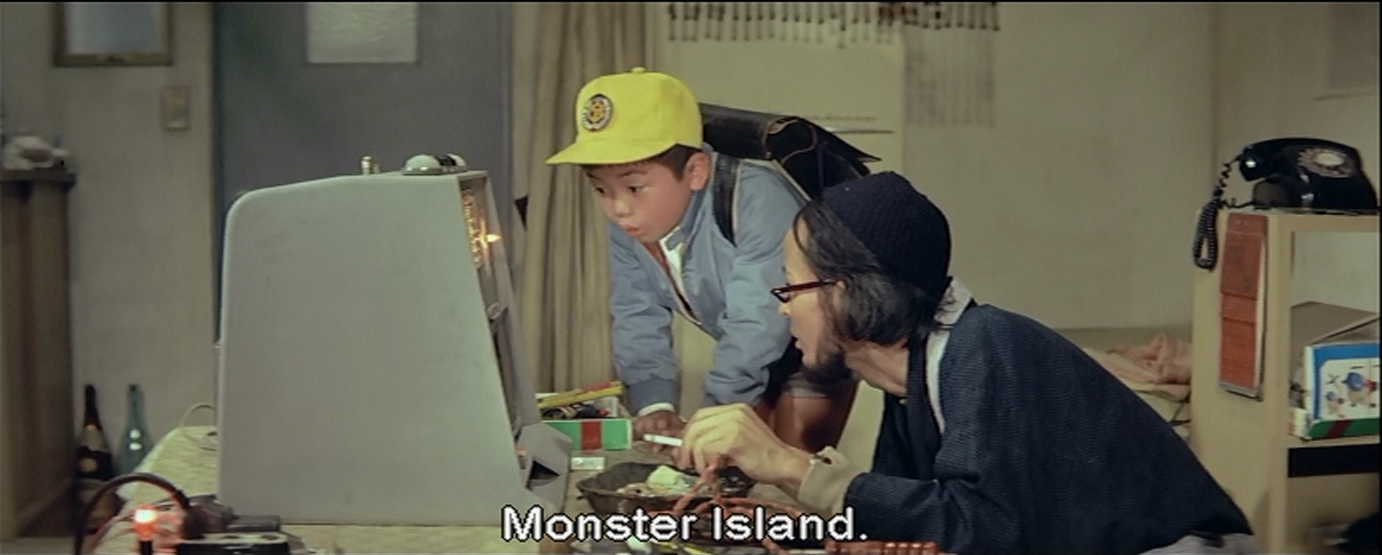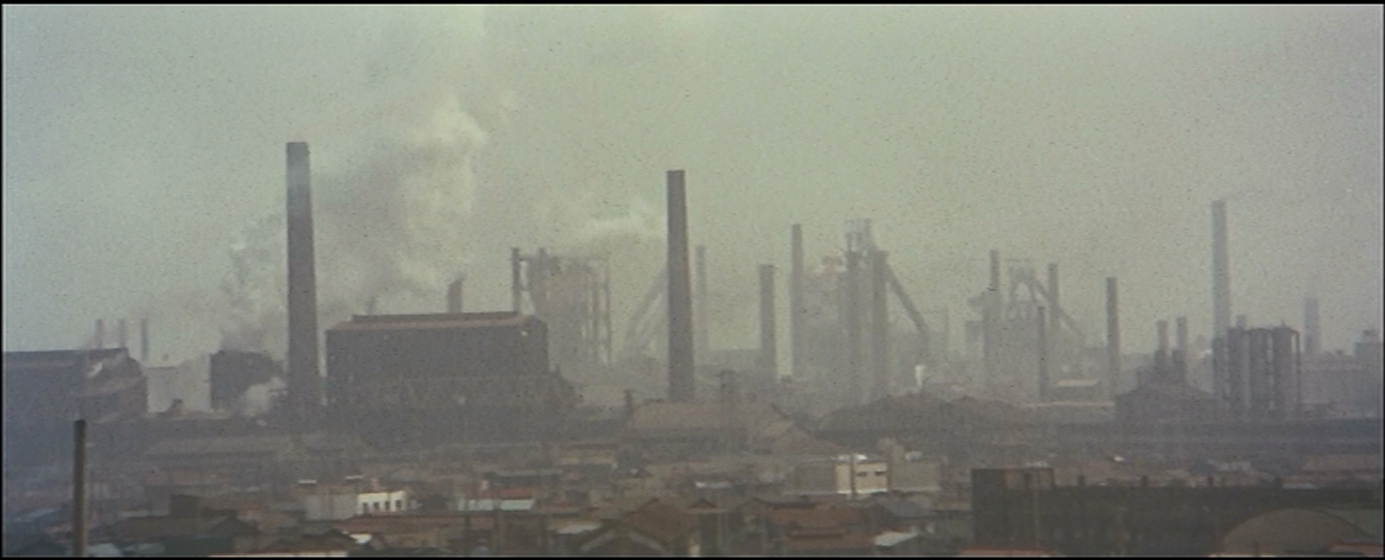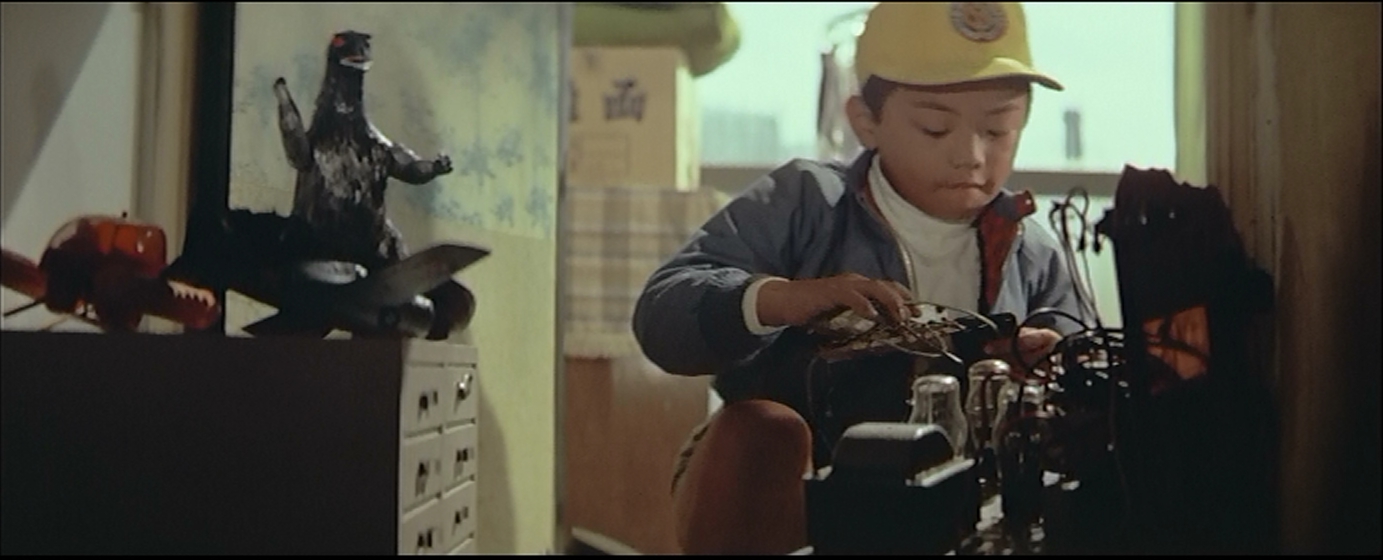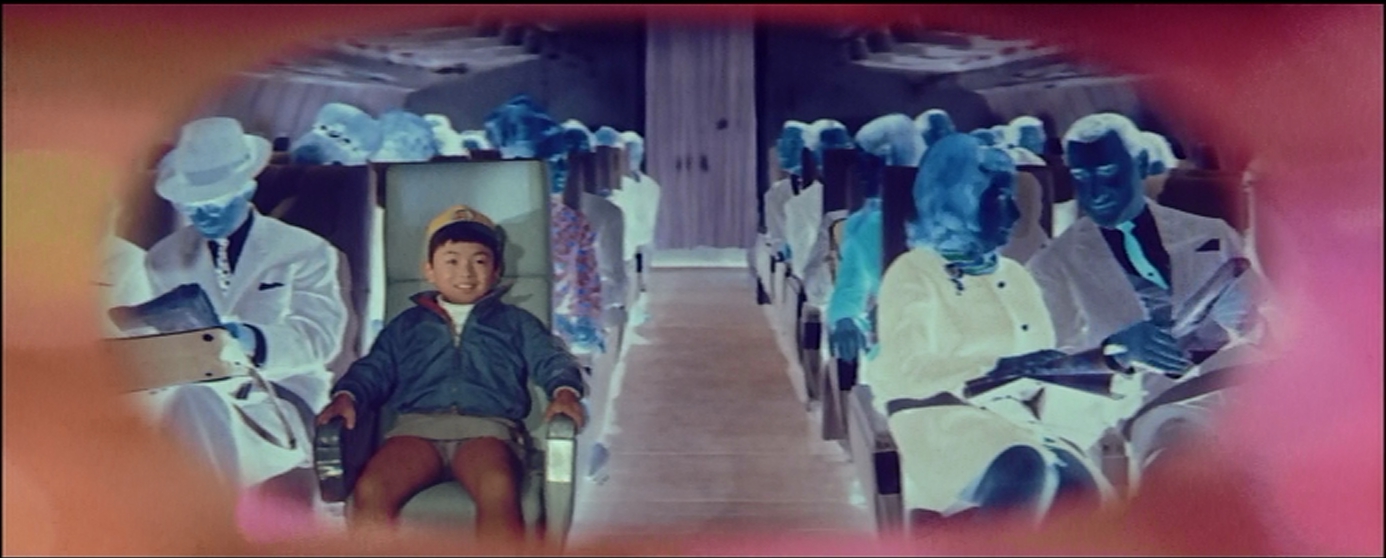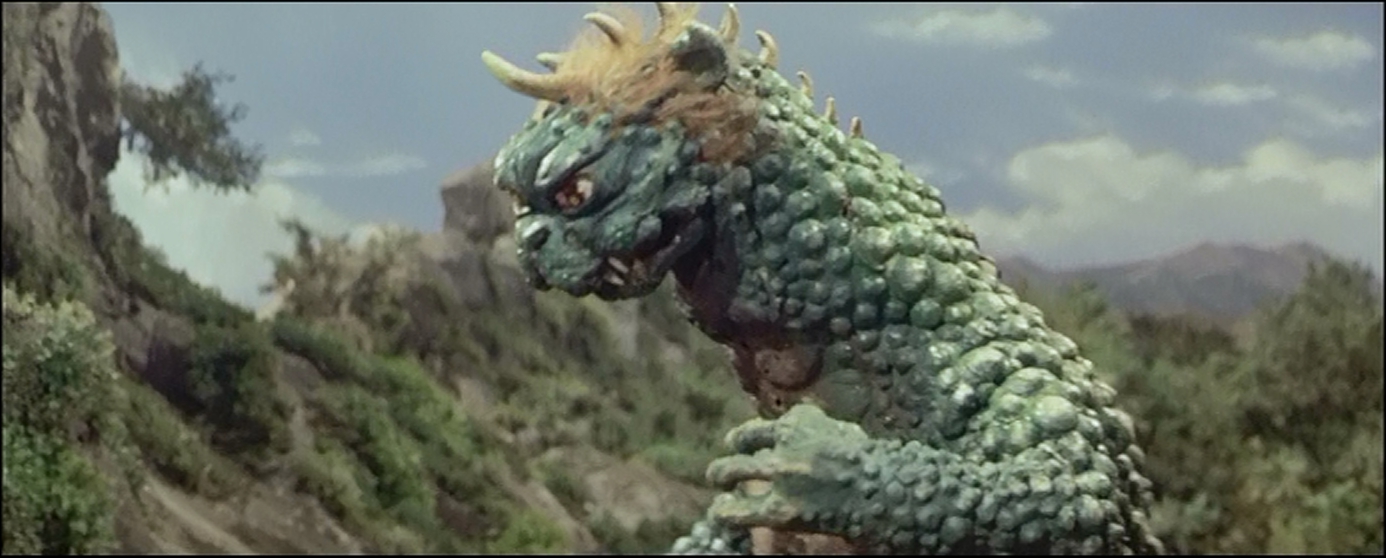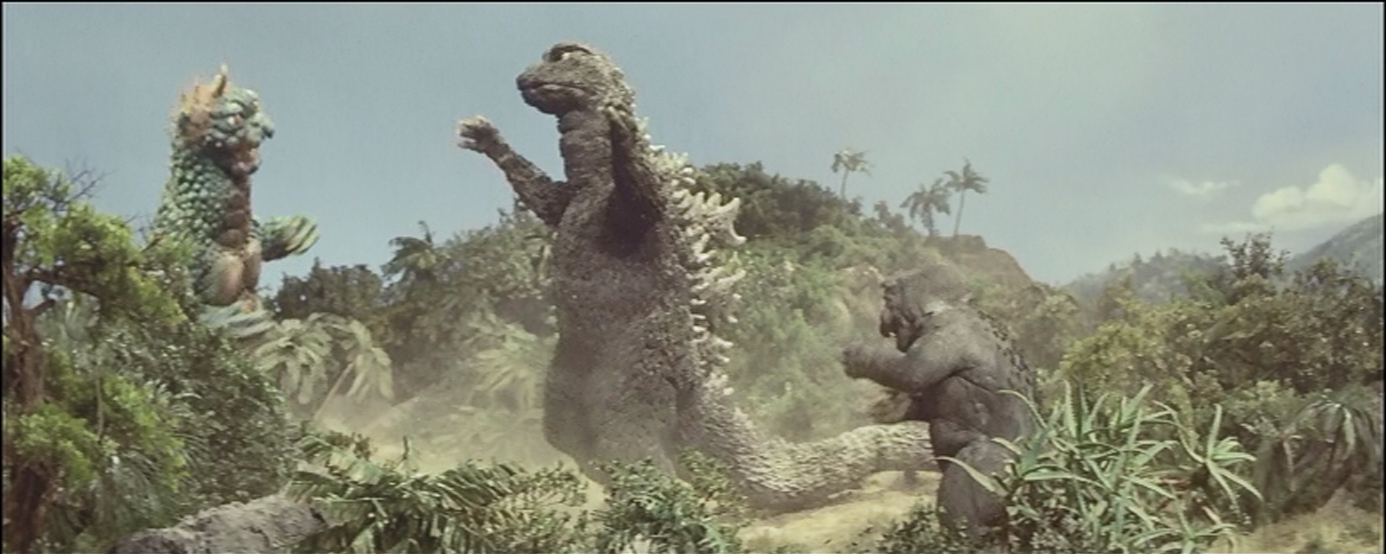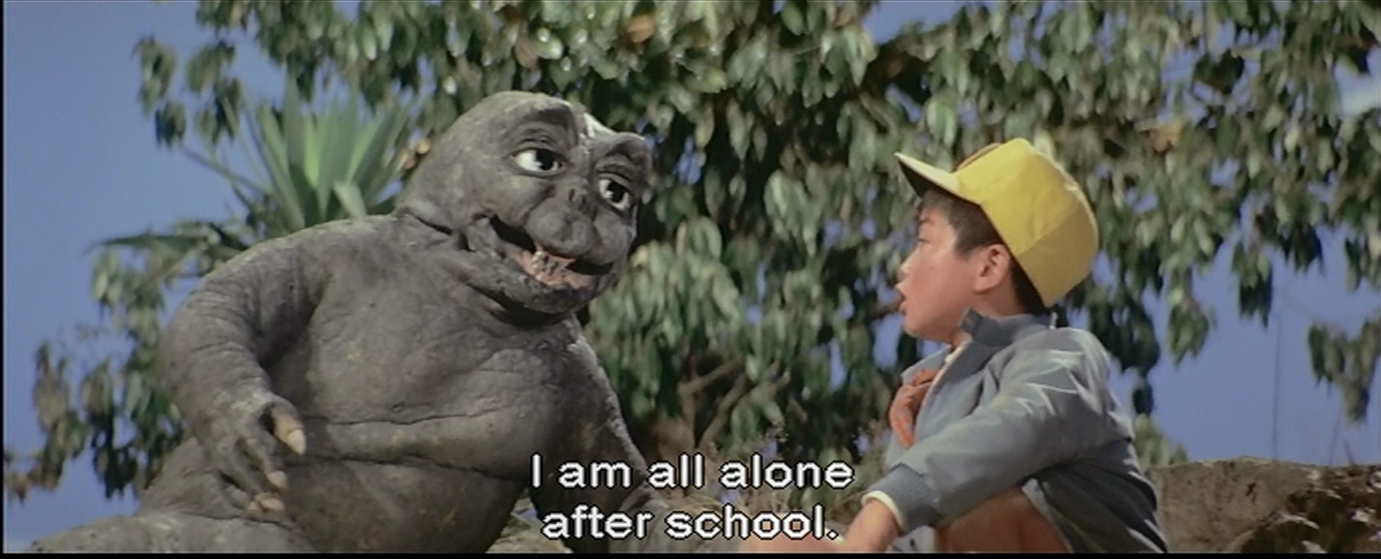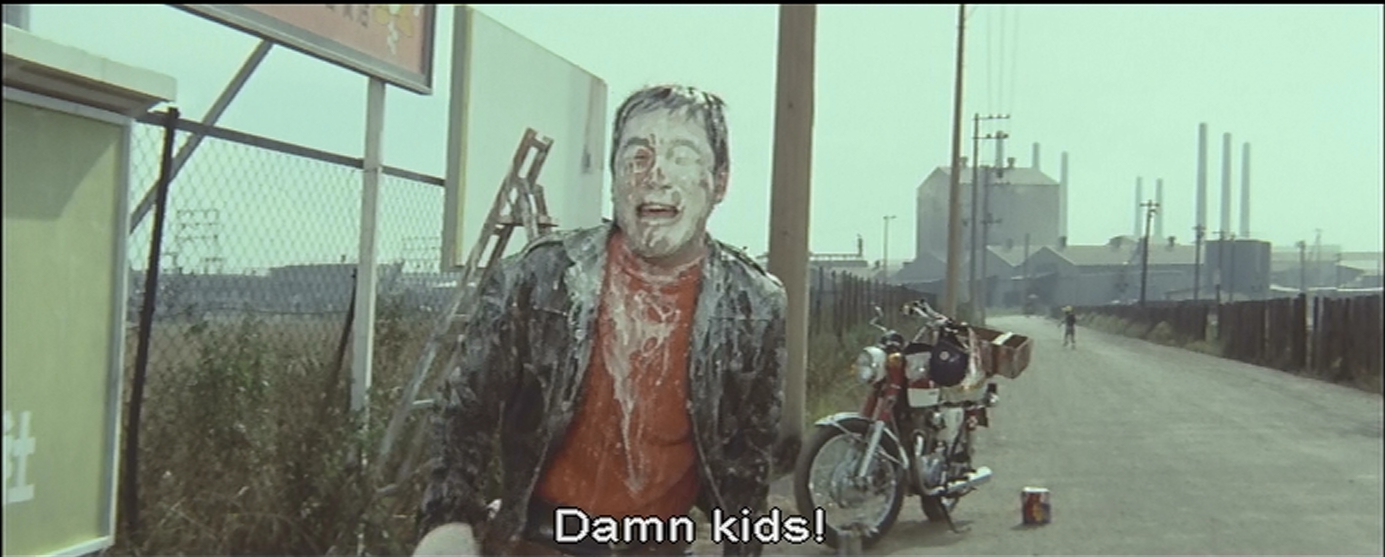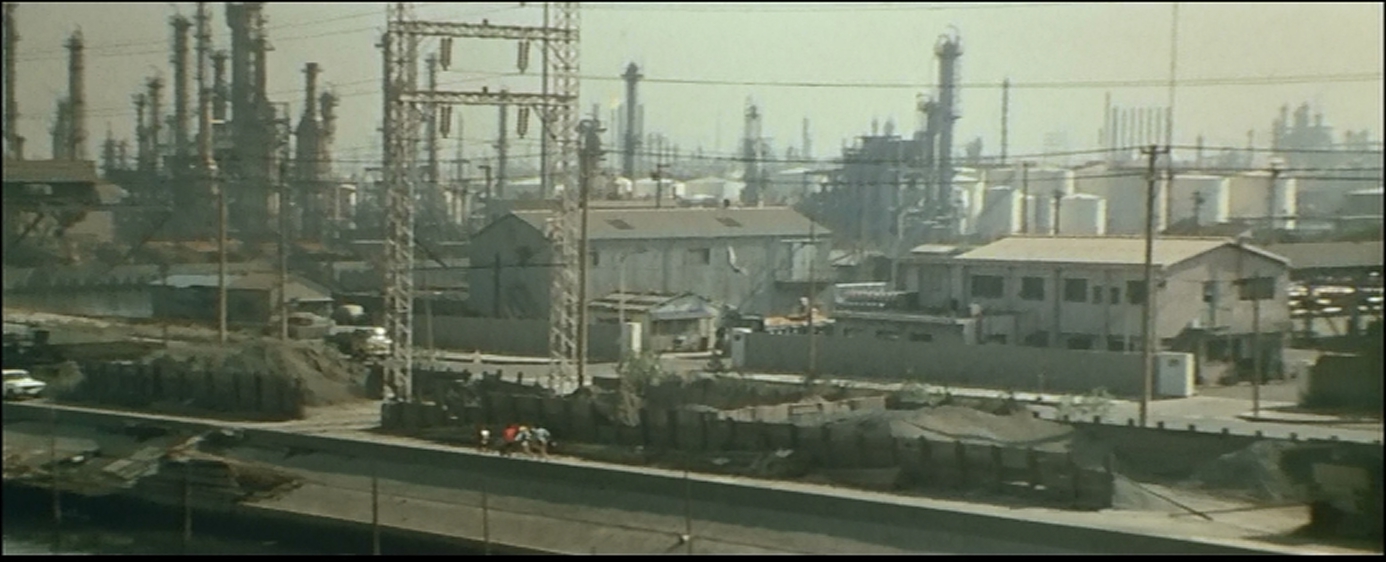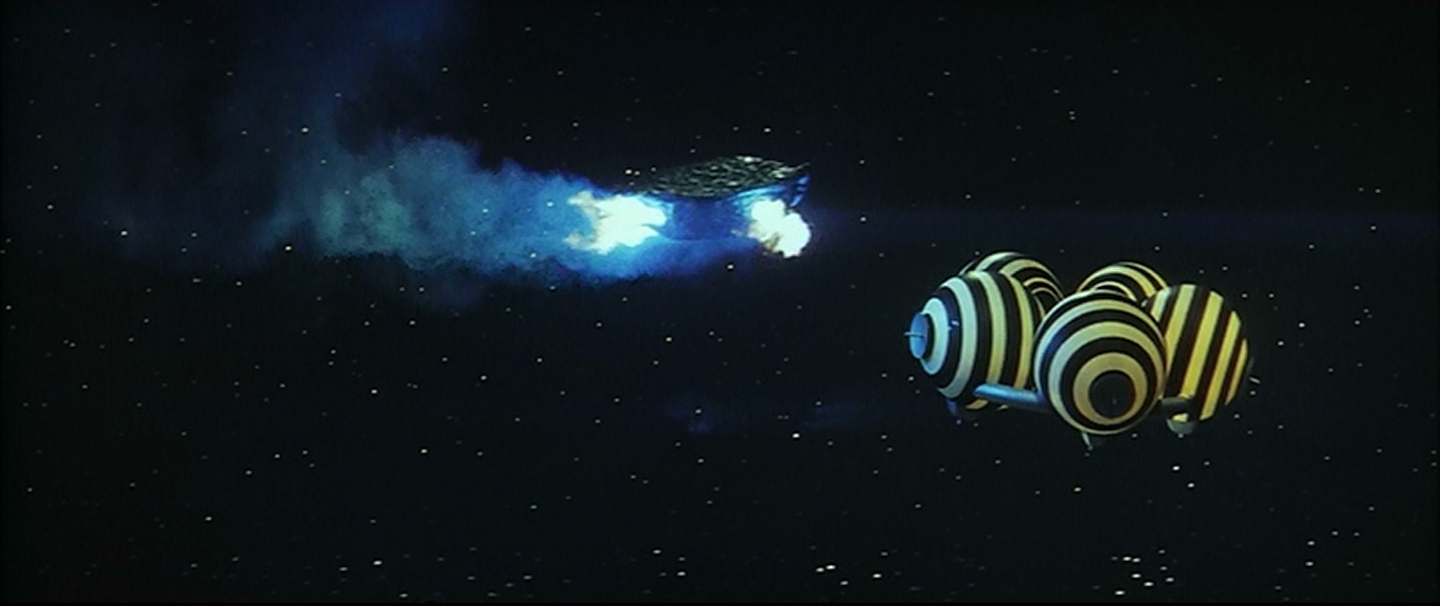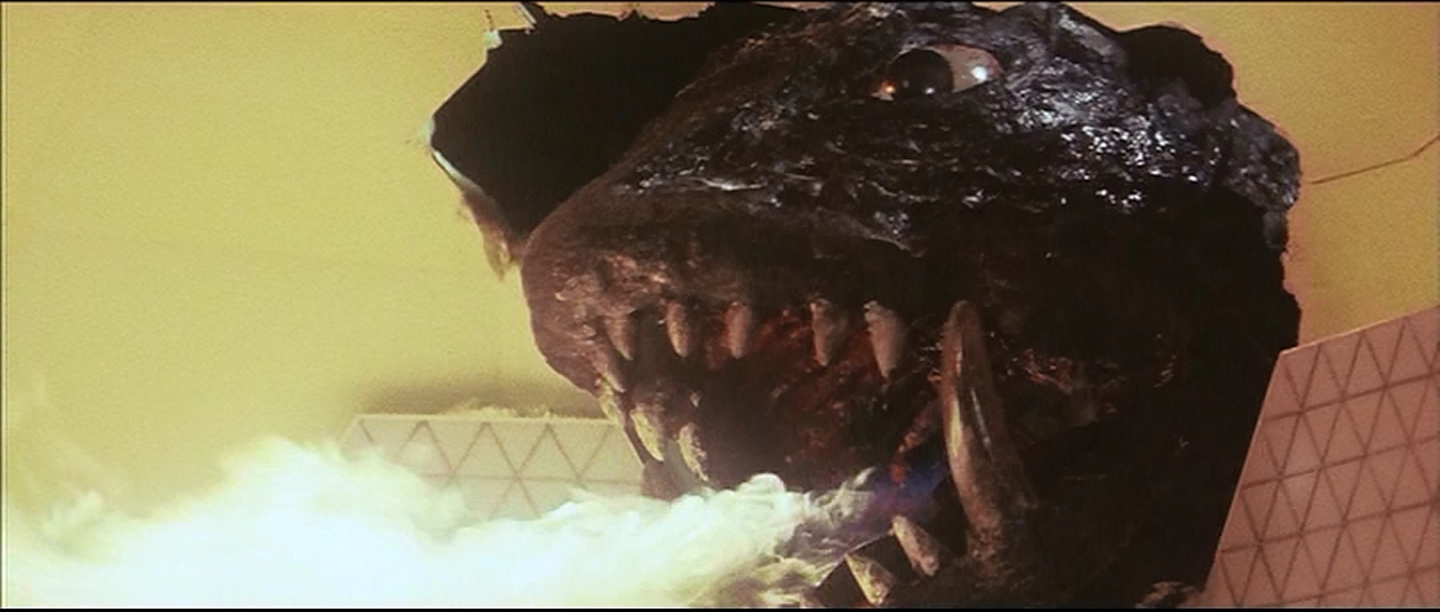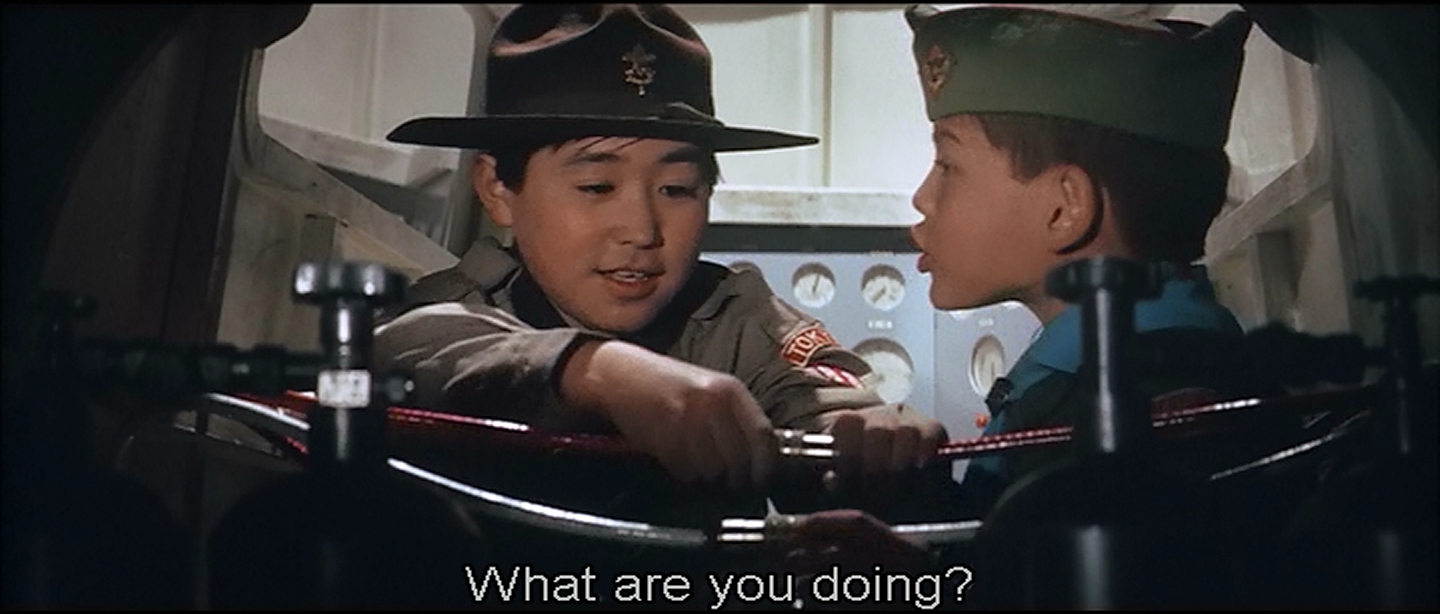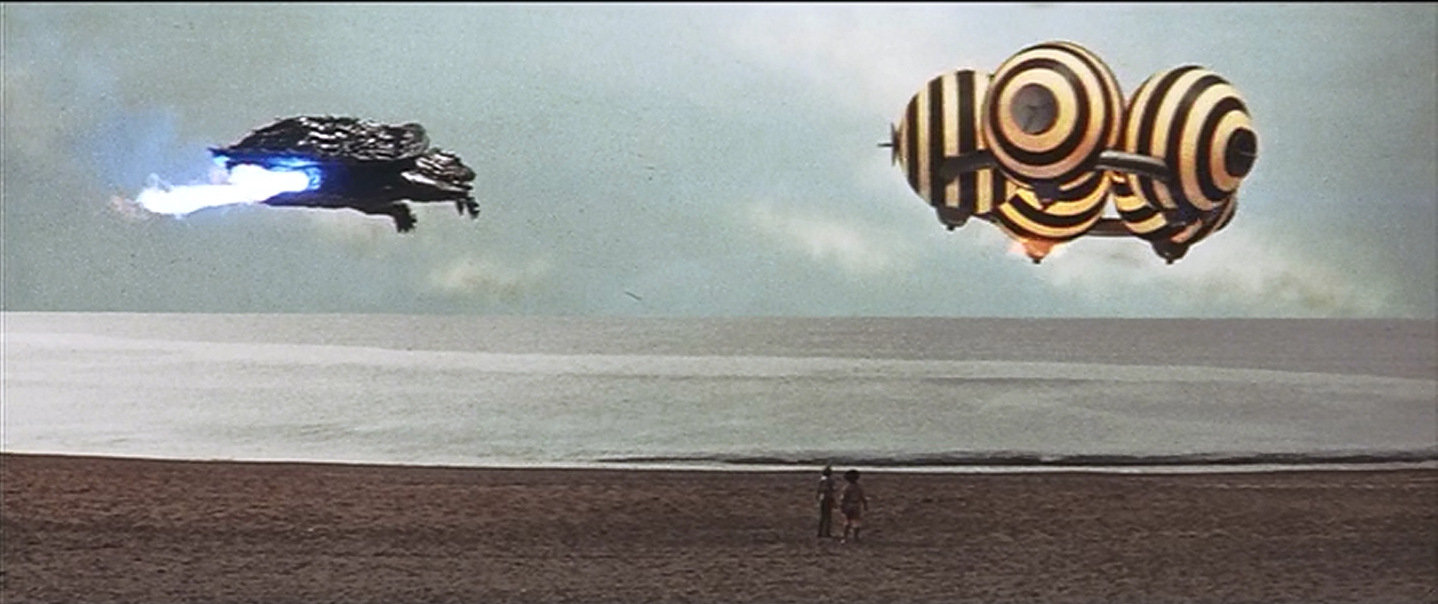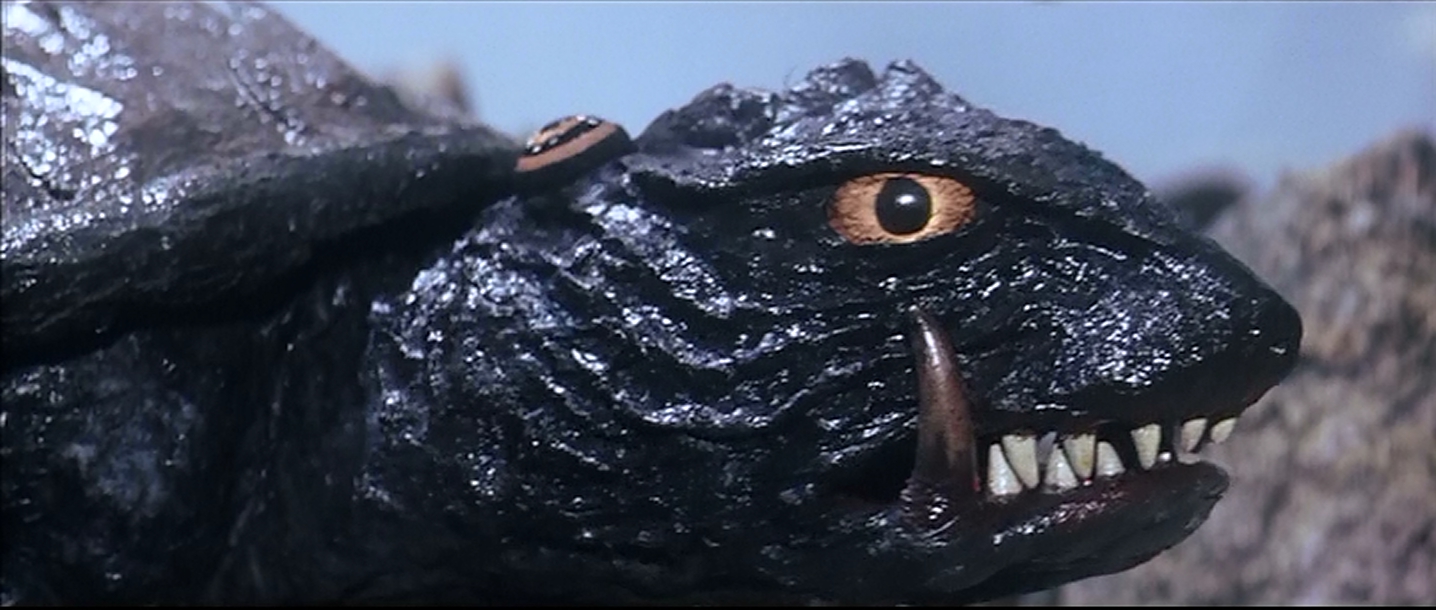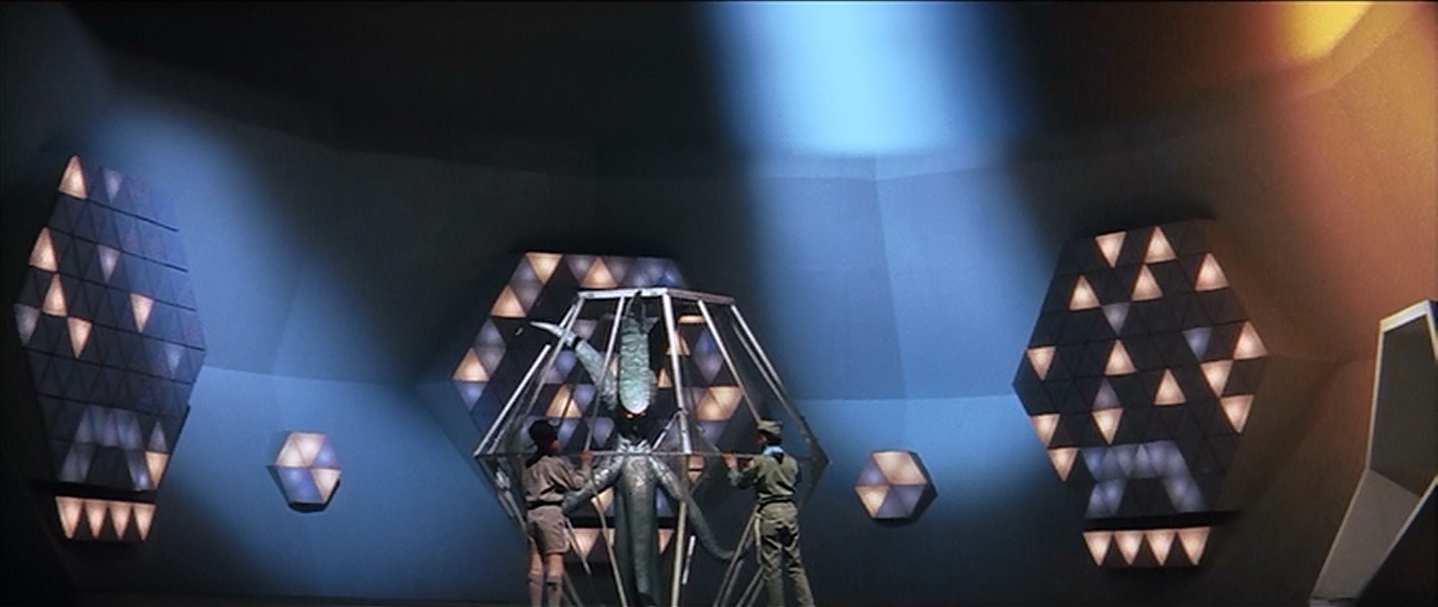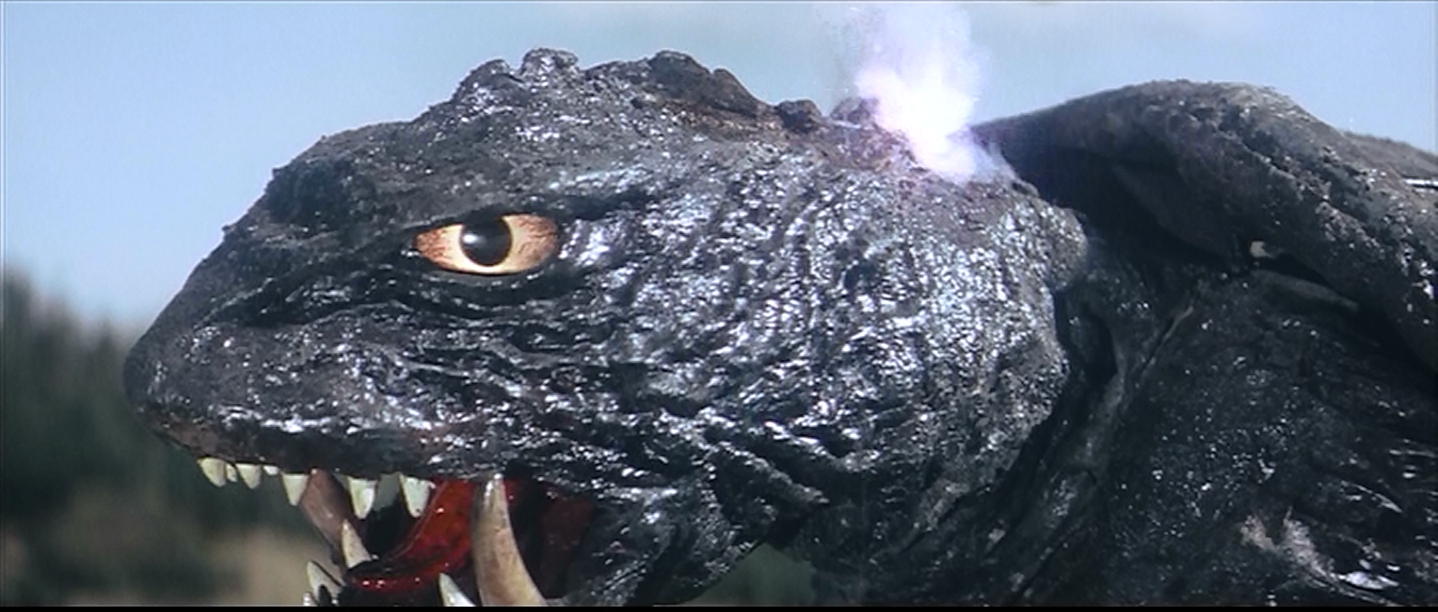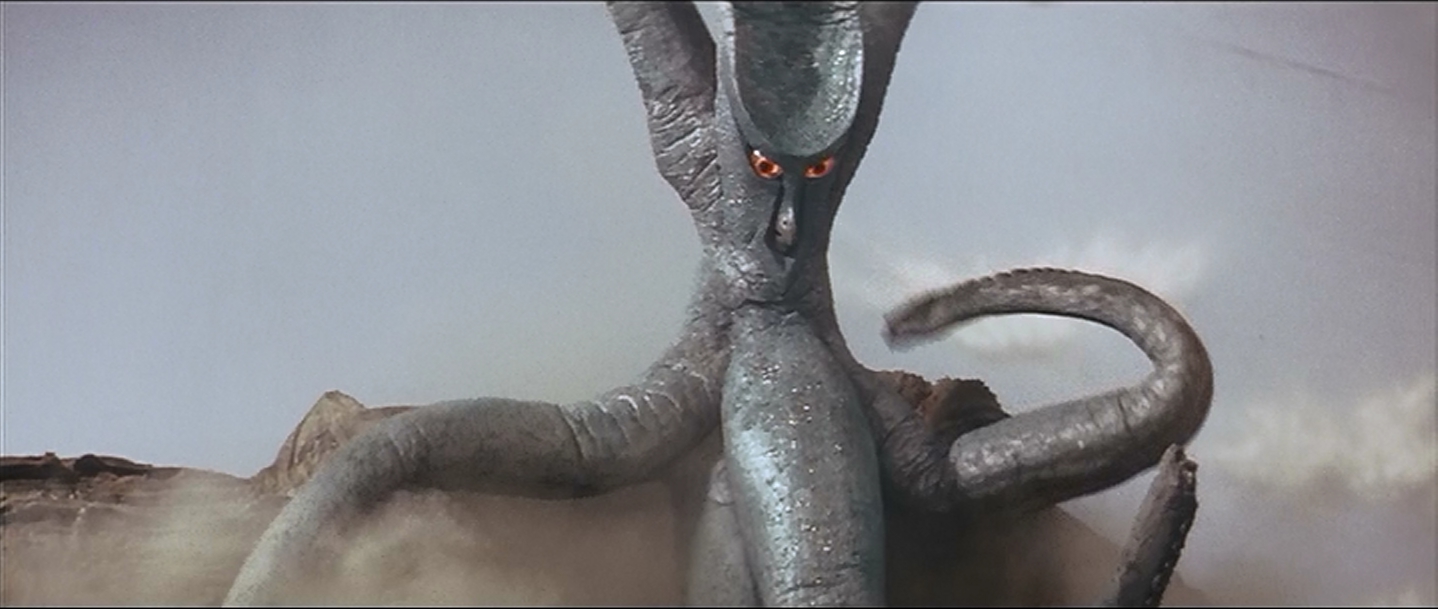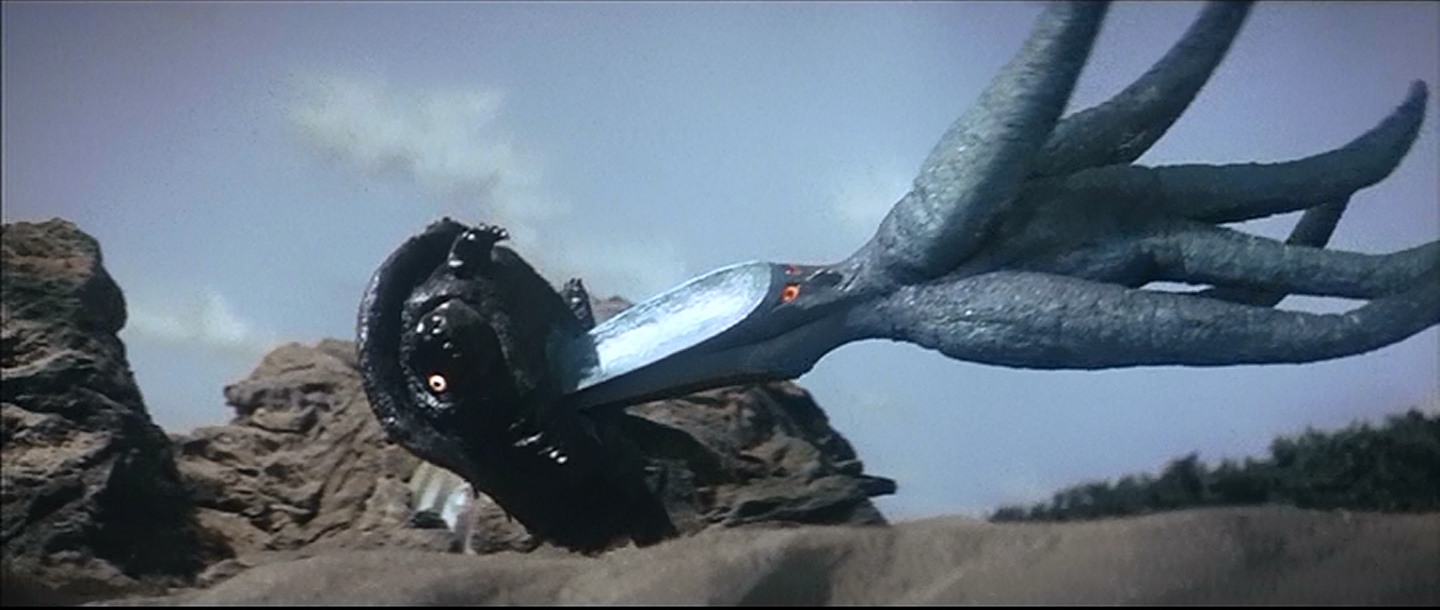Space Amoeba begins with a brilliant scene dealing with the exploration of space. The image of a Saturn Five lookalike, the Helios 7, silhouetted against the sun, is a powerful, beautiful image.
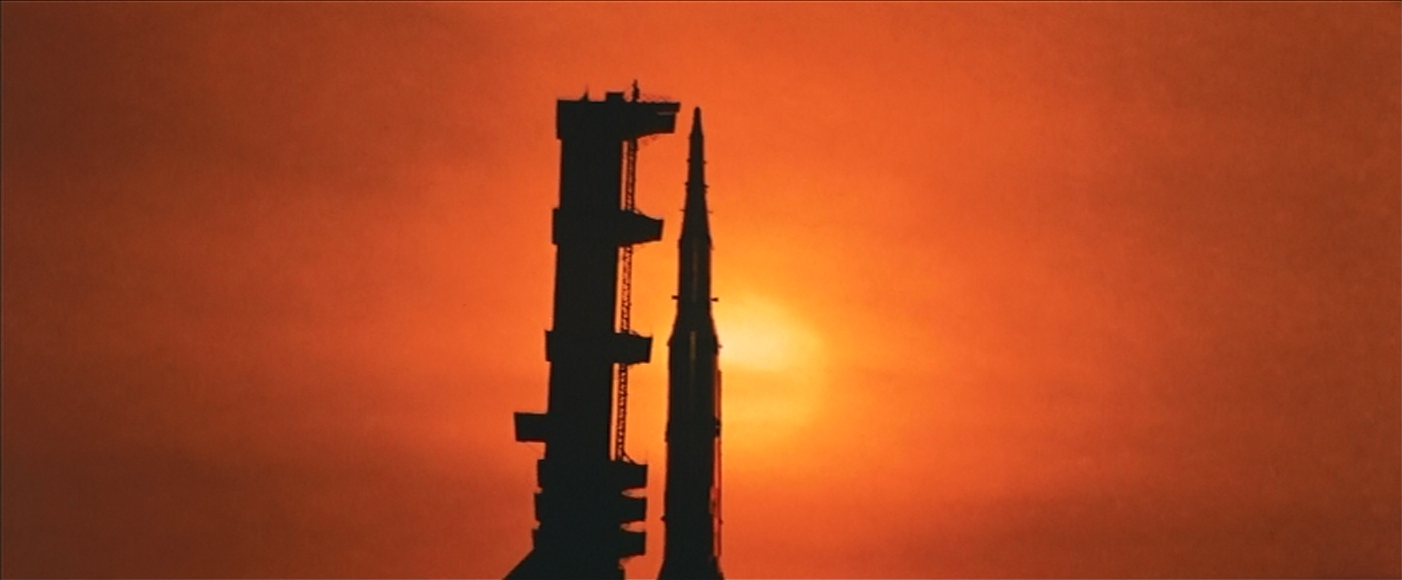
That said, the film employs considerable coincidence when a commercial jetliner happens to be within eyeshot when the Helios 7 capsule, which was taken over by something glittery in space, splashes down. When you consider how big the Pacific Ocean is, that's quite the coincidence. And of course, because this is a Honda film, our truth-seeker is a reporter. And because it's the end of the sixties, he's laughed at by the establishment.
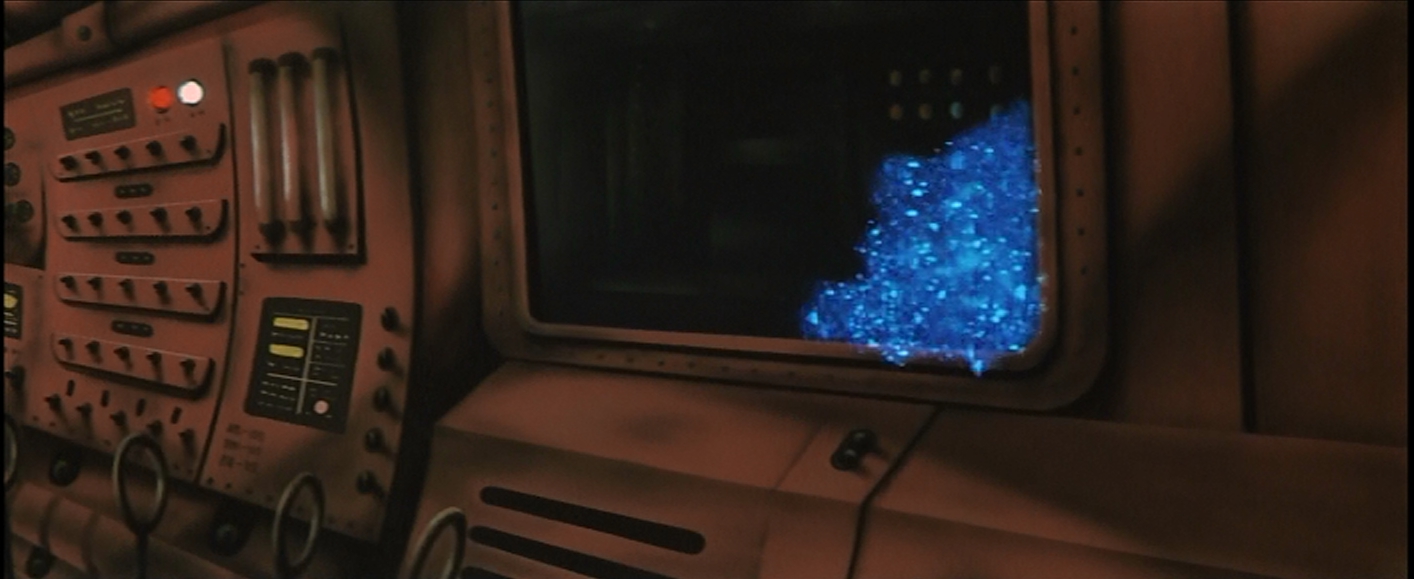
In yet another nod to the greedy industrialist trope, and in fact a neat lift from Gappa, an wealthy industrialist is going to build a resort on isolated and lightly-populated Selgio Island.
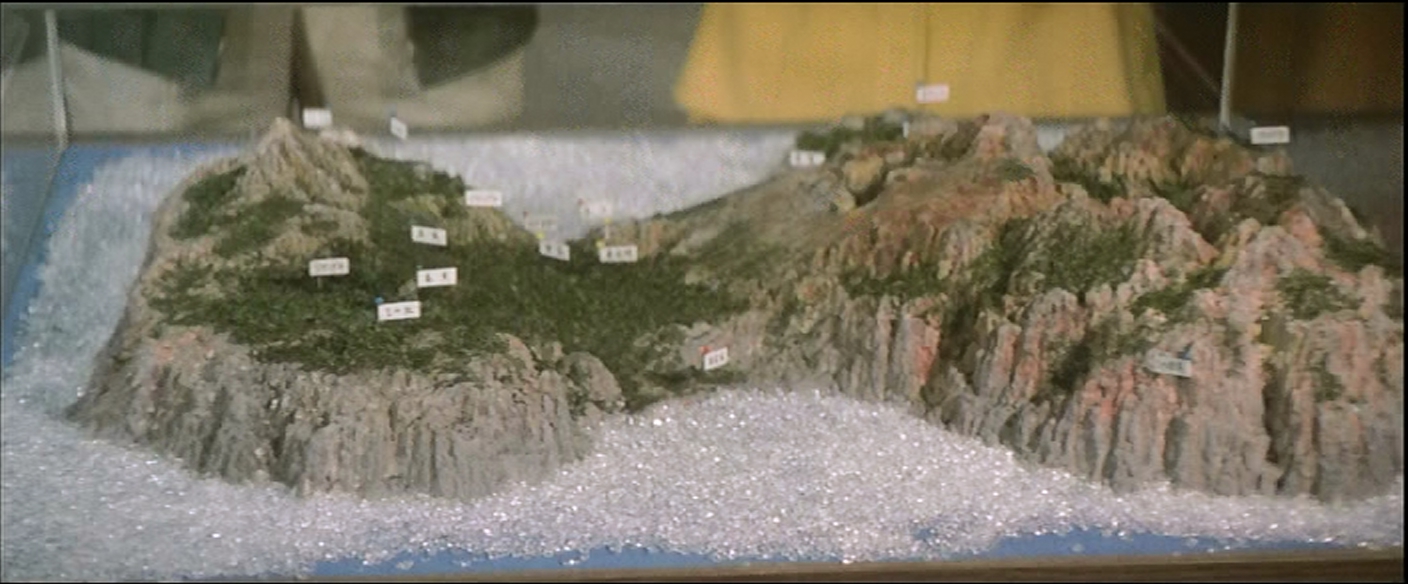
Like Infant Island, it turns out Selgio Island has a monstrous guardian; Gezora the gigantic cuttlefish of doom. It also appears to have Chekov's Volcano. An island that smokes in the first act will erupt in the second.
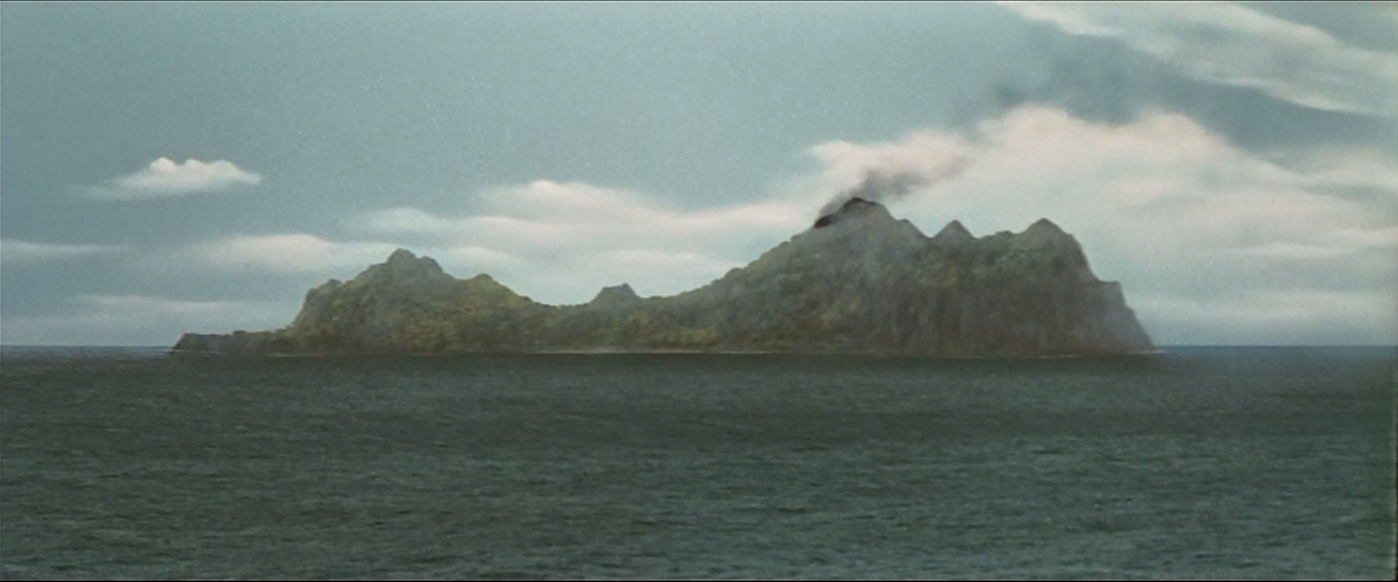
To make sure we get a monster in the first twenty minutes of the film, some of Asia Development Corporation's lackeys go fish at Selgio's forbidden cove. And it turns out that on Selgio the fish fish for you.
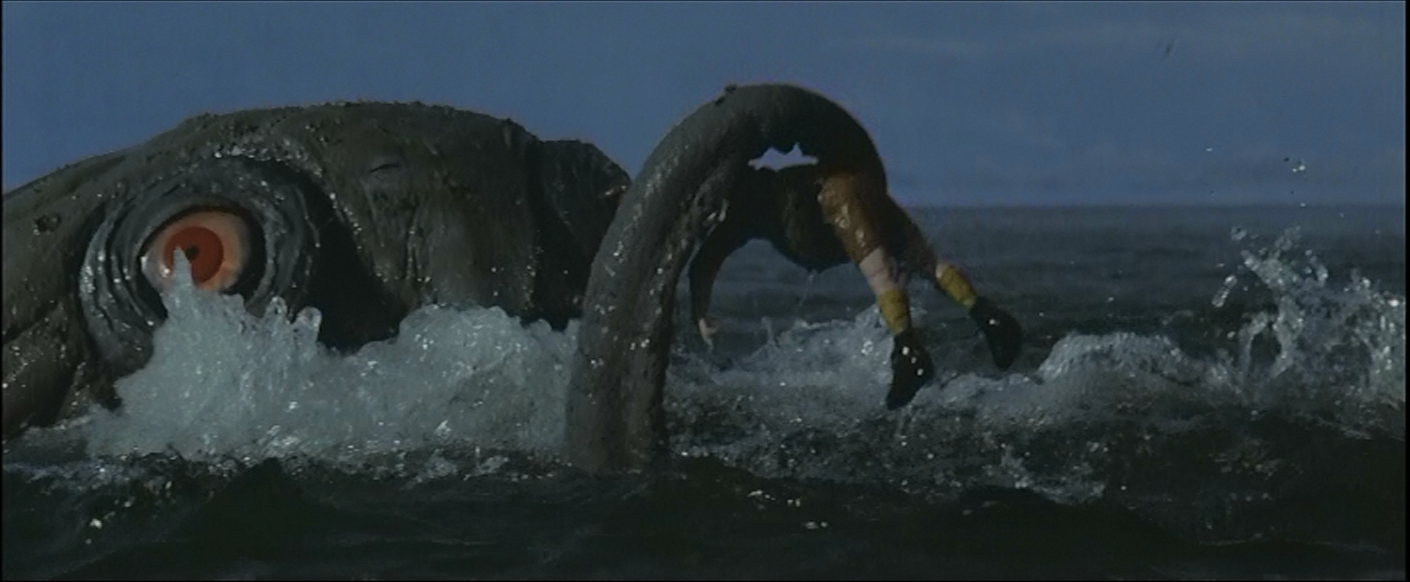
Gezora later attacks the cabin and devours the company guy he didn't get. But before it can devour their local guide, it's driven off by a flock of day-flying bats.
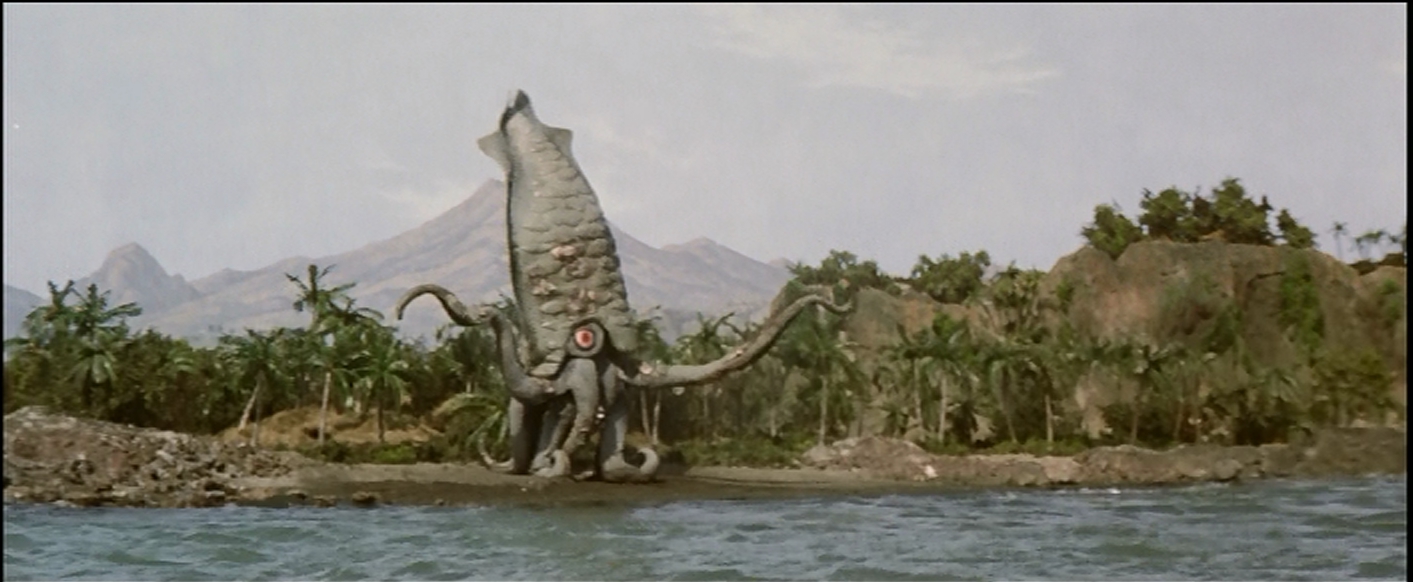
The Gezora suit is decent, and gets used for an extended attack on the village. Under Honda's careful direction, the sequence doesn't drag, but moves along at a good clip, and is integrated well into the rest of the film. Unlike most other Kaiju, Gezora is successfully attacked and killed with guns and fire. This stands in a stark contrast to works like Godzilla, where tank fire, artillery, and millions of volts doesn't even faze the monster.
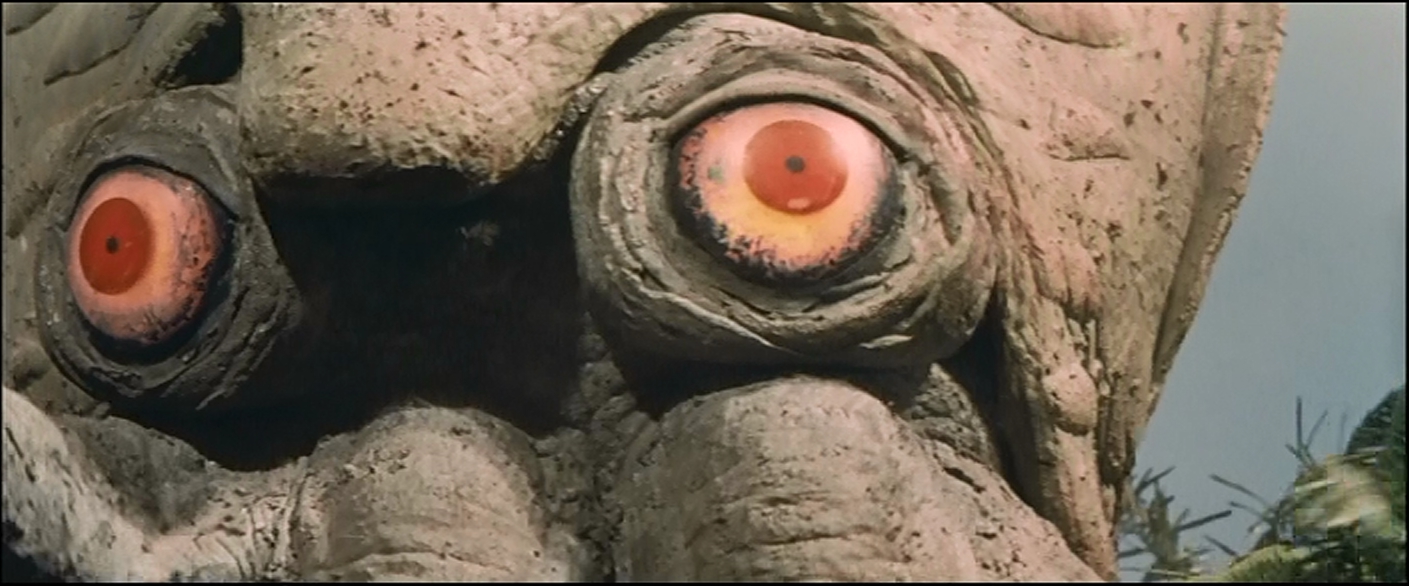
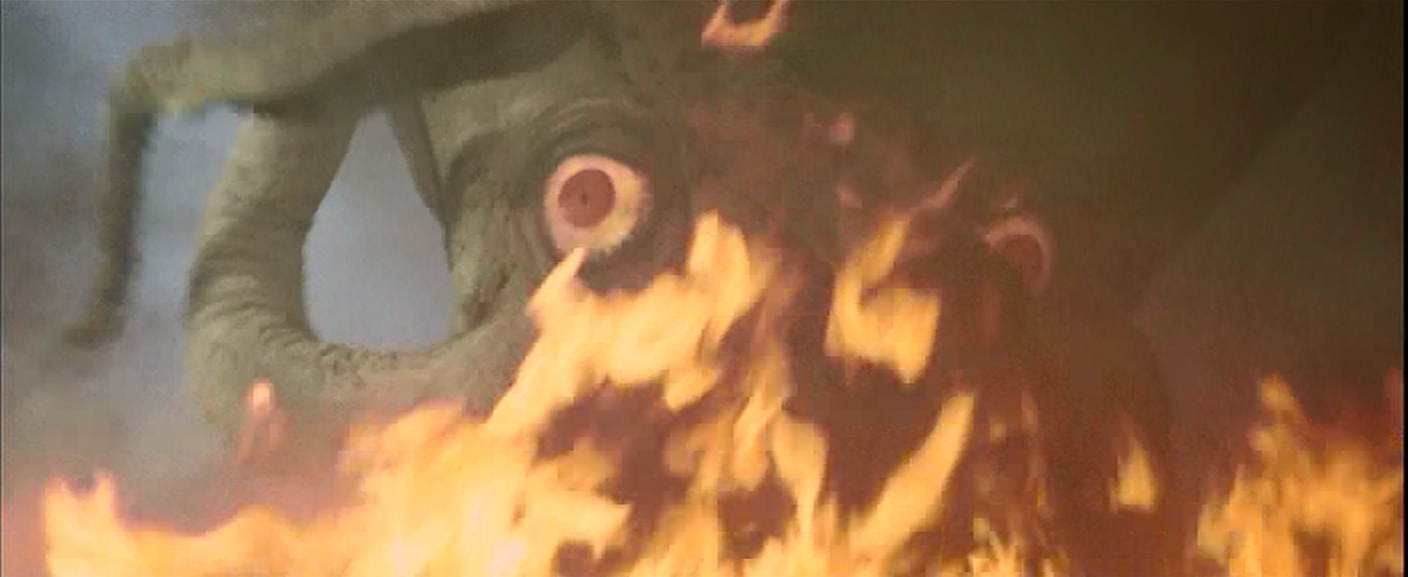
Once Gezora is dead, the weird glow infests a giant crab. This monster is tougher, and does not fall to machine-gun fire. However, it does fall into a hole, where it is destroyed by setting a big pile of gas cans on fire. Twice thwarted, the glowing glittery thing divides itself, infesting a turtle (Kamoeba), another crab, and a human.
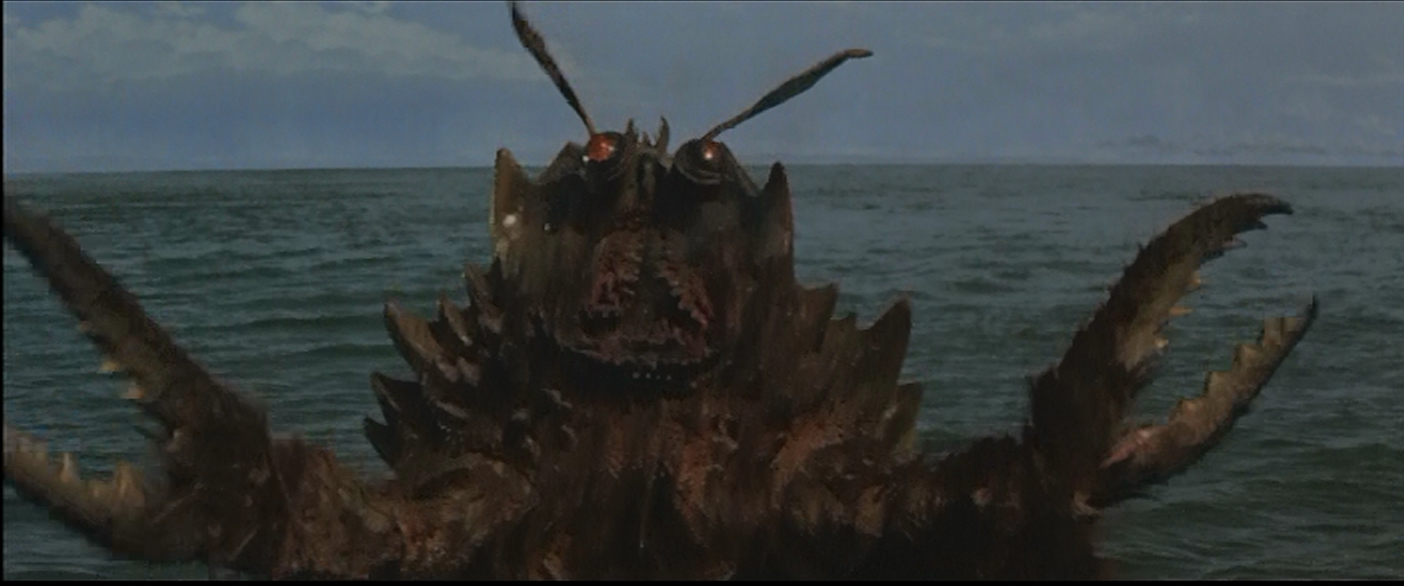
Luckily, the hypersonic sounds of the bats makes the two giant creatures go crazy, and they fight each other. They do so up the volcano, and like Frankenstein vs Baragon, the volcano erupts, consuming the kaiju.
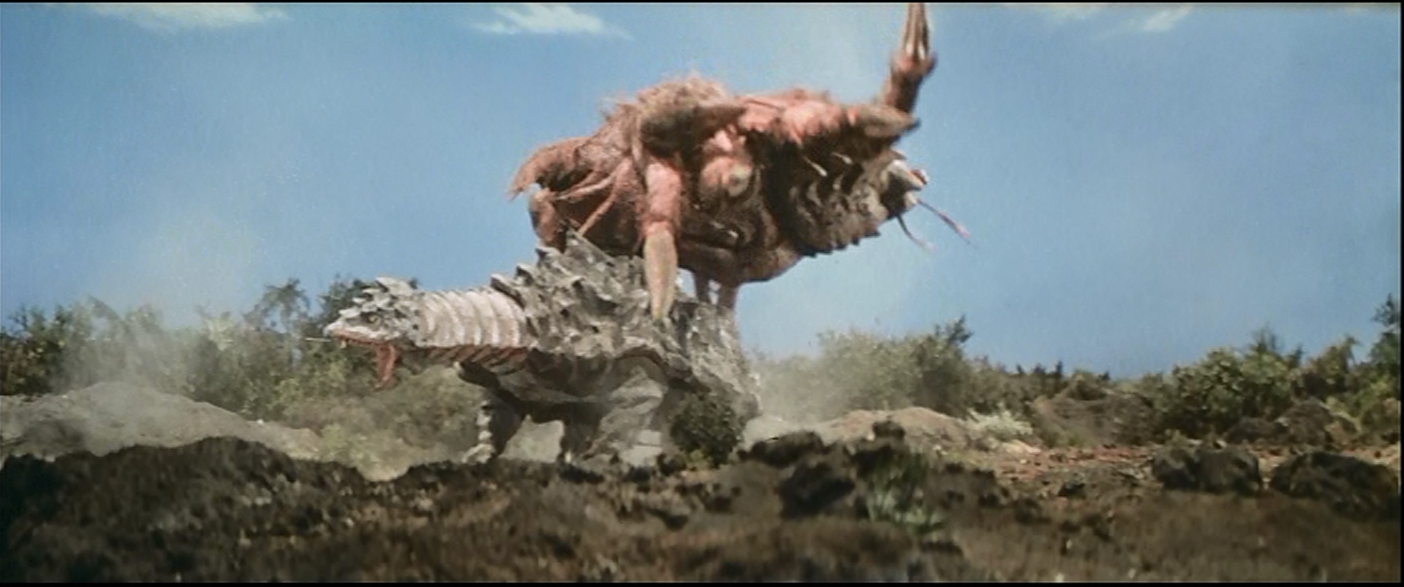
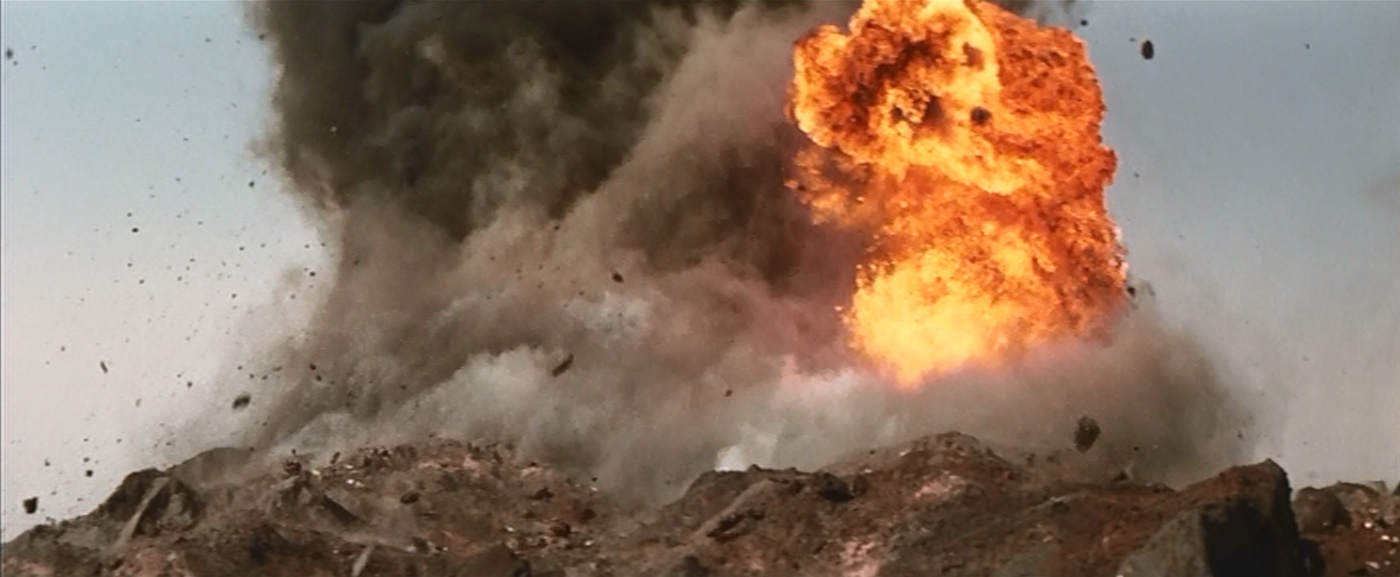
Ultimately, this films lacks the city-stomping that demonstrates the monster's size. All the action happens on Selgo Island. With the smaller set, mostly of trees and a few small huts, the monsters don't have to be quite so gigantic. But the film lacks a lot of the fire and earnestness that made Godzilla and Matango the thrilling and weird films they were. Space Amoeba is merely an acceptable film with little going for it.
Next up, the Godzilla franchise veers in a very strange direction.
